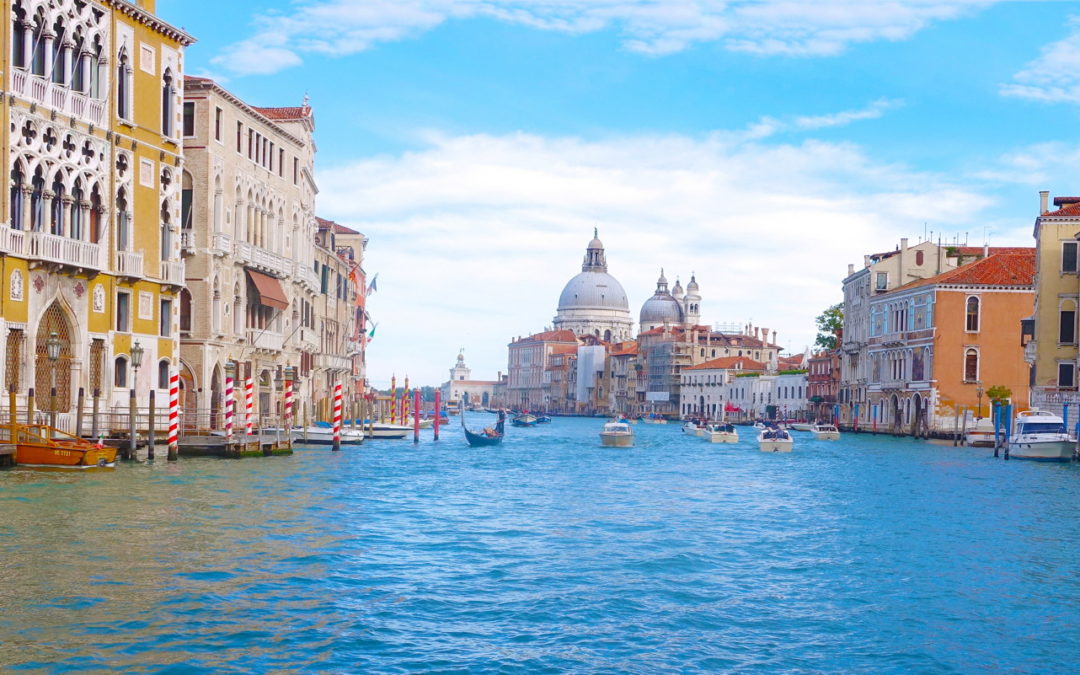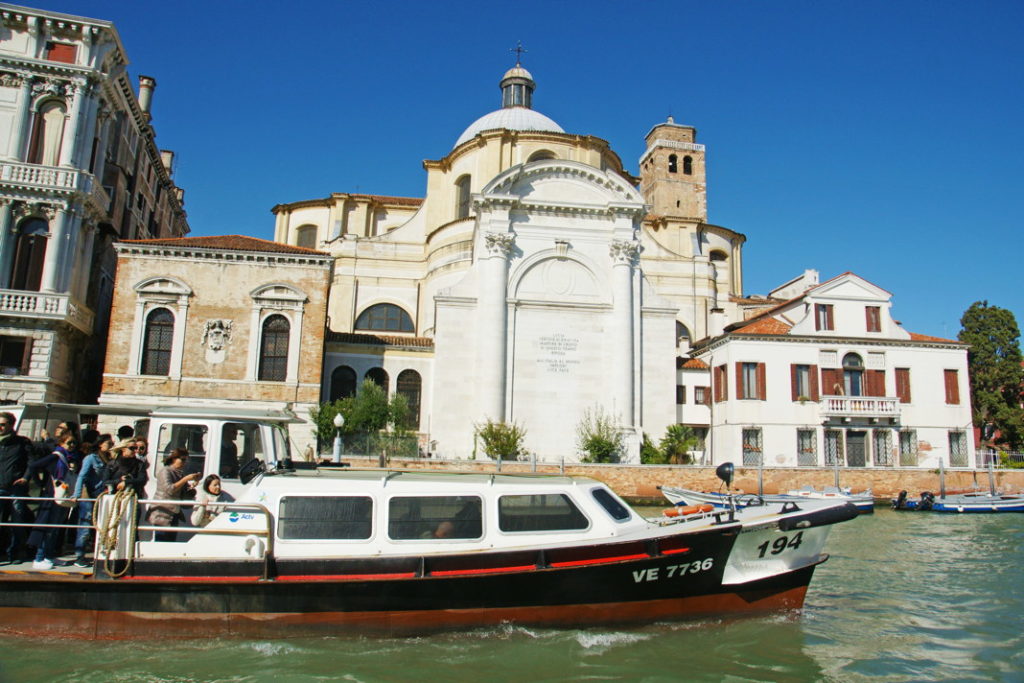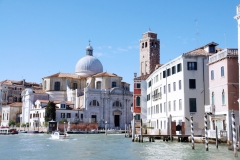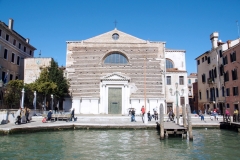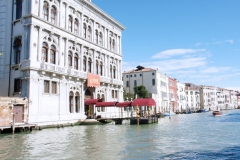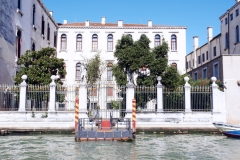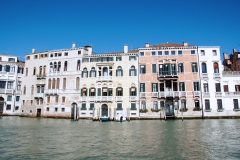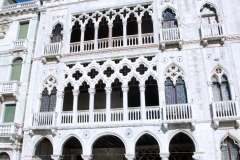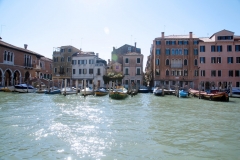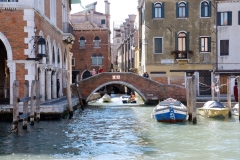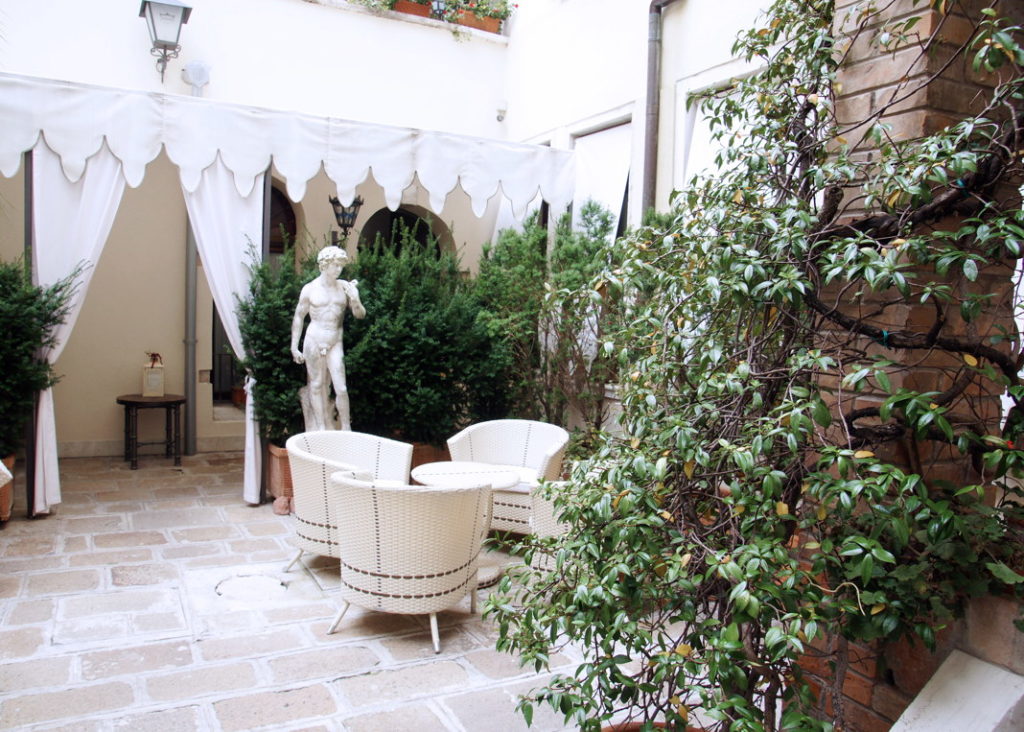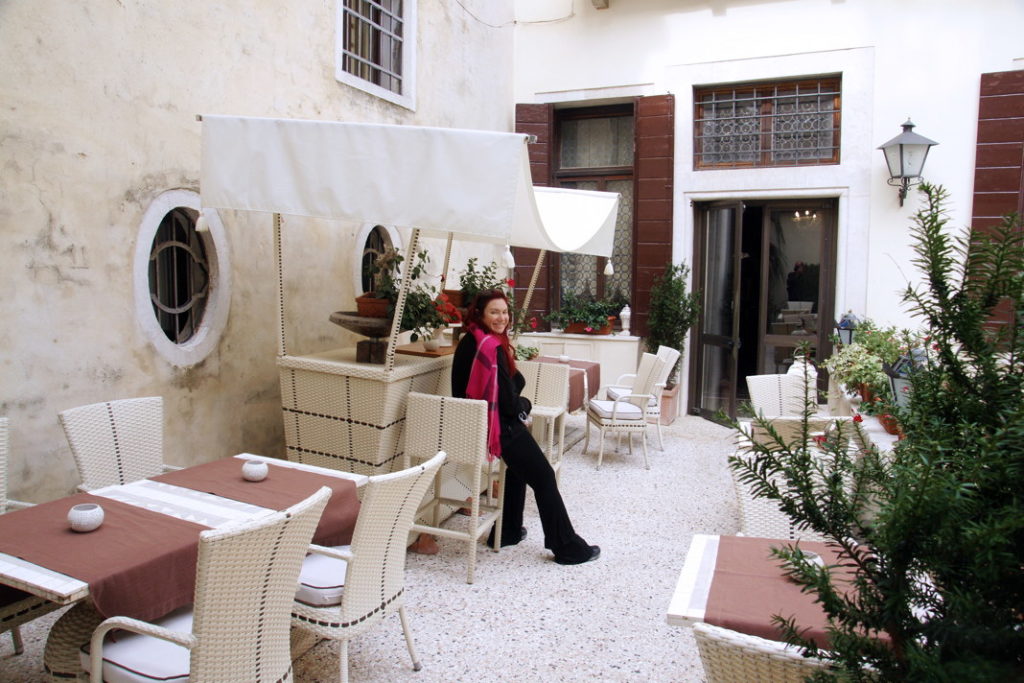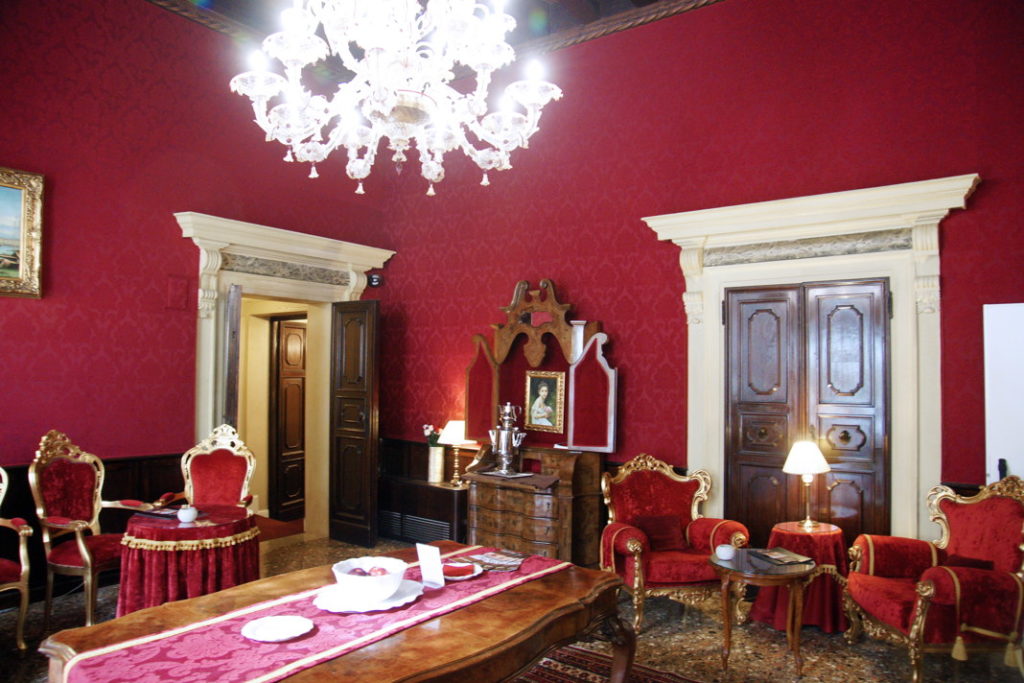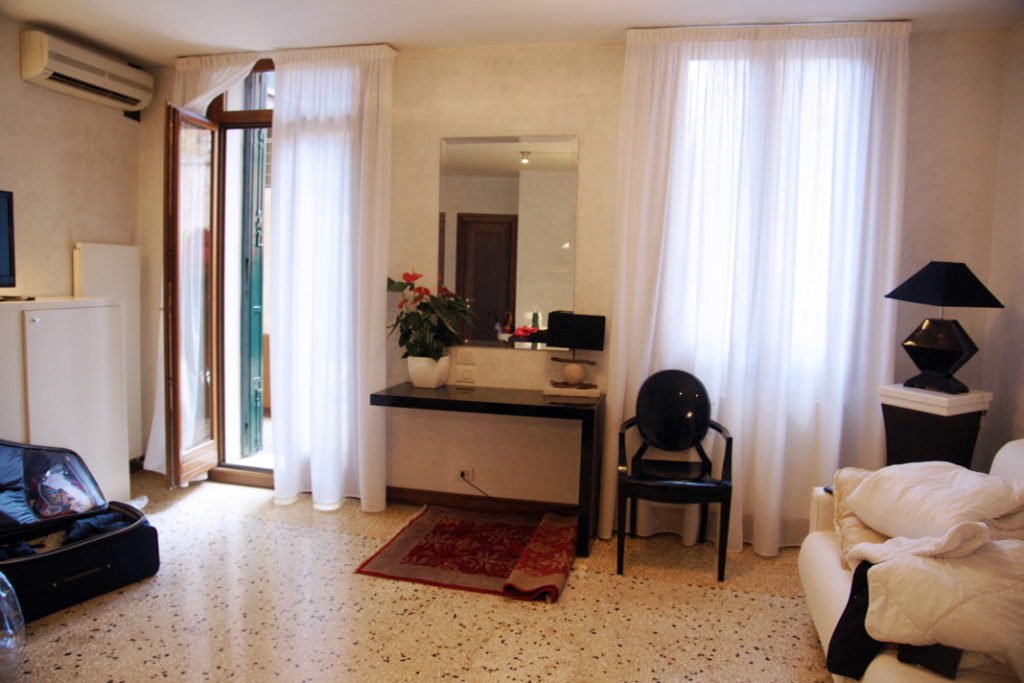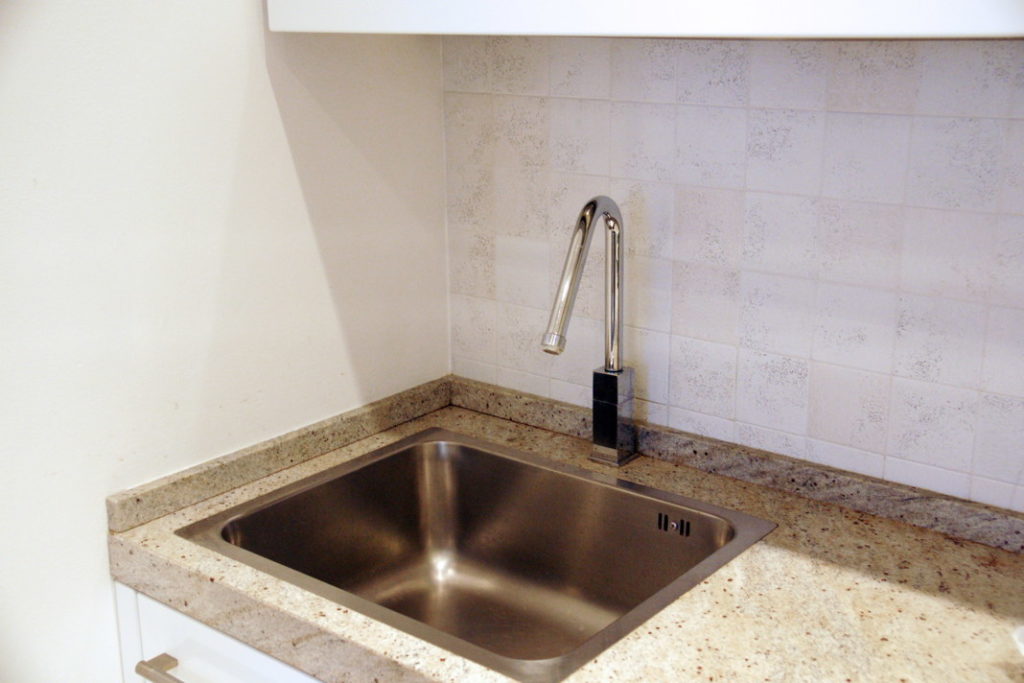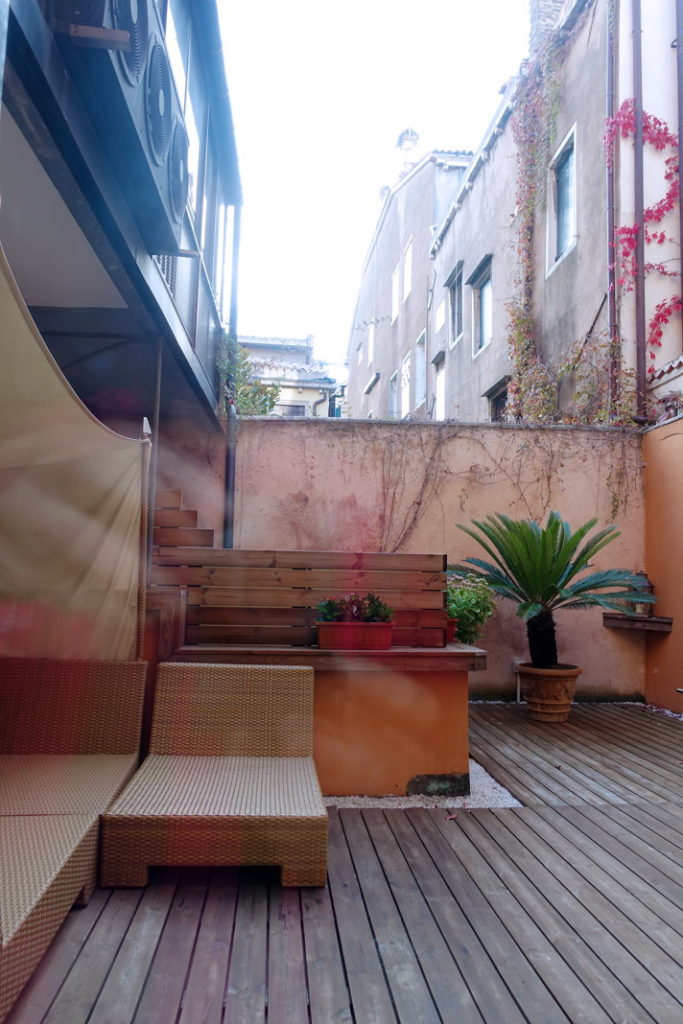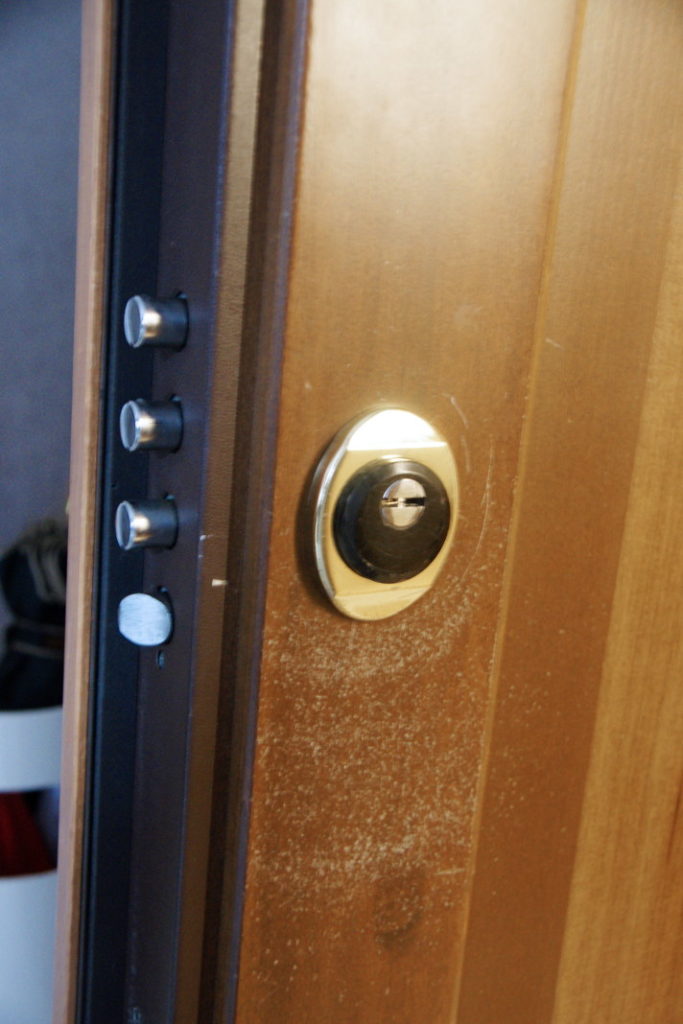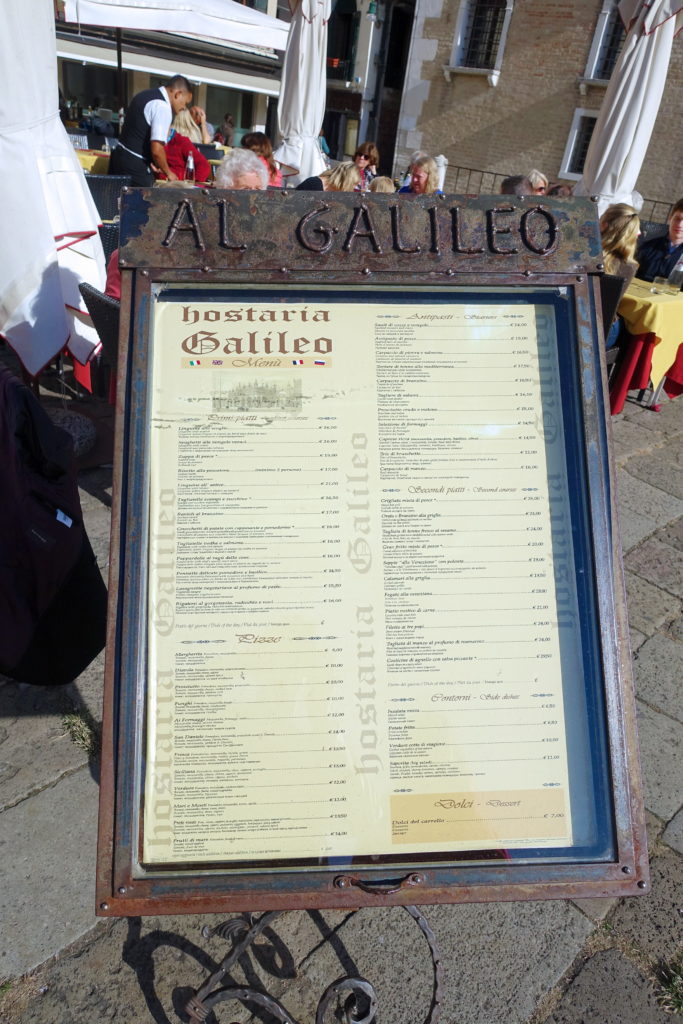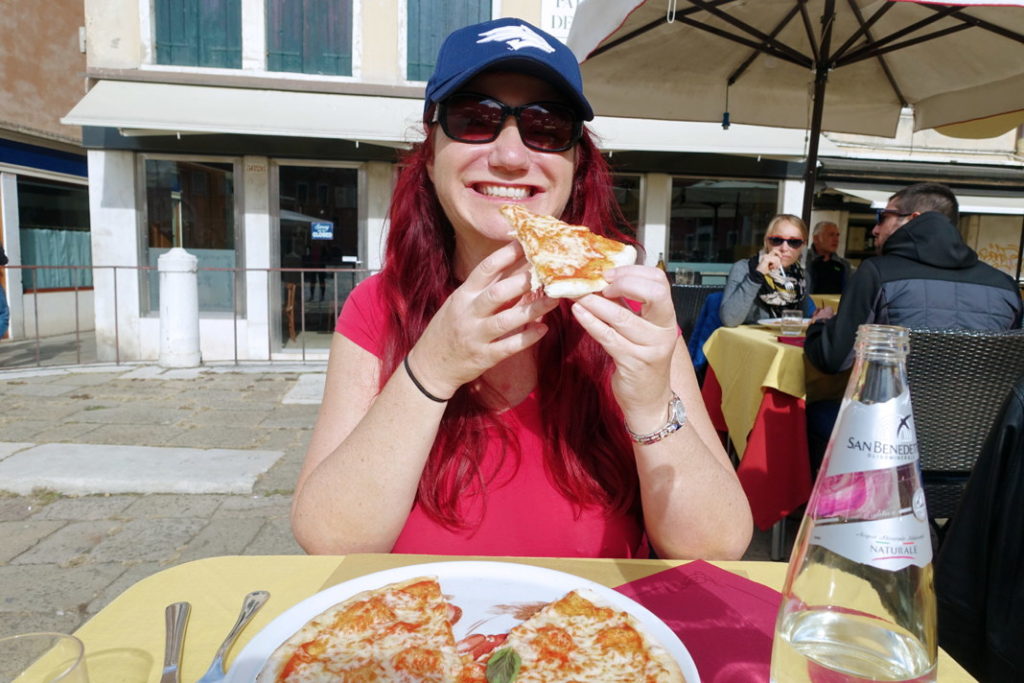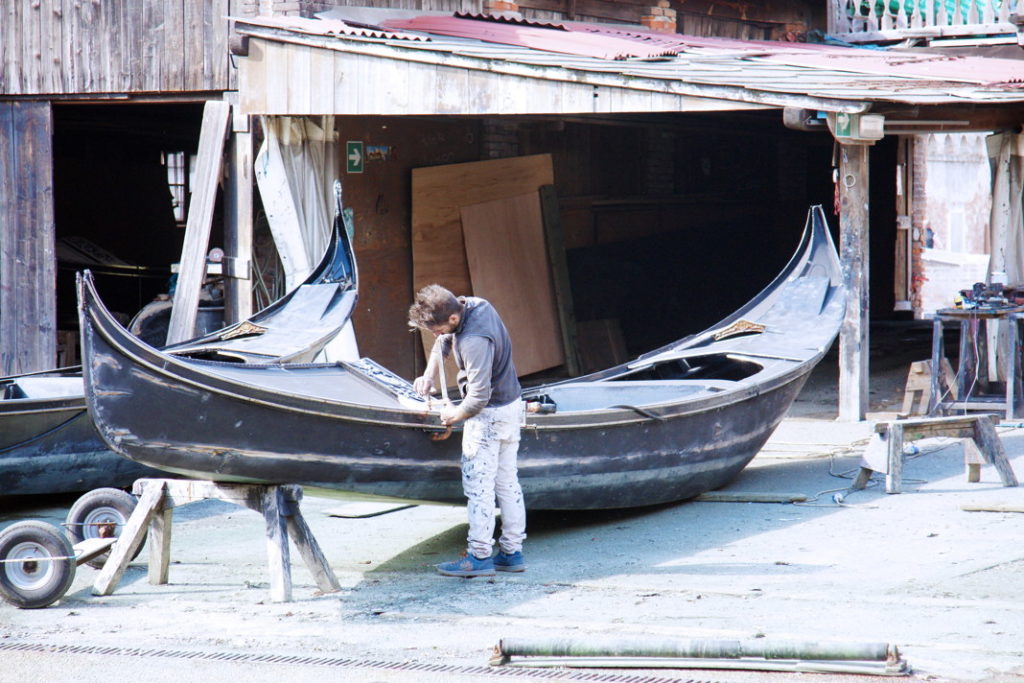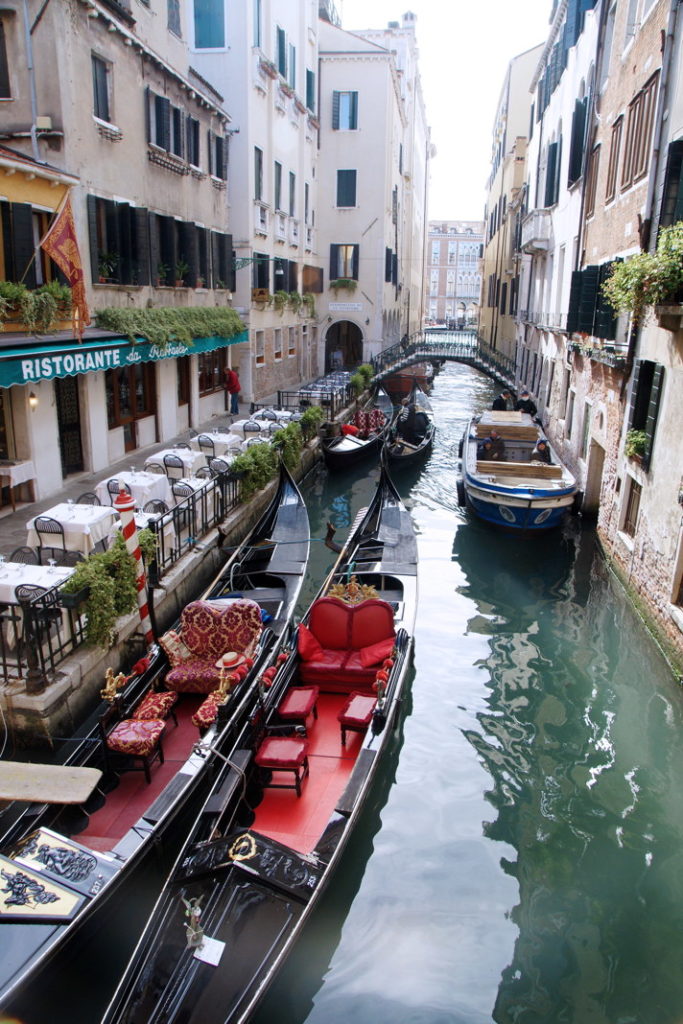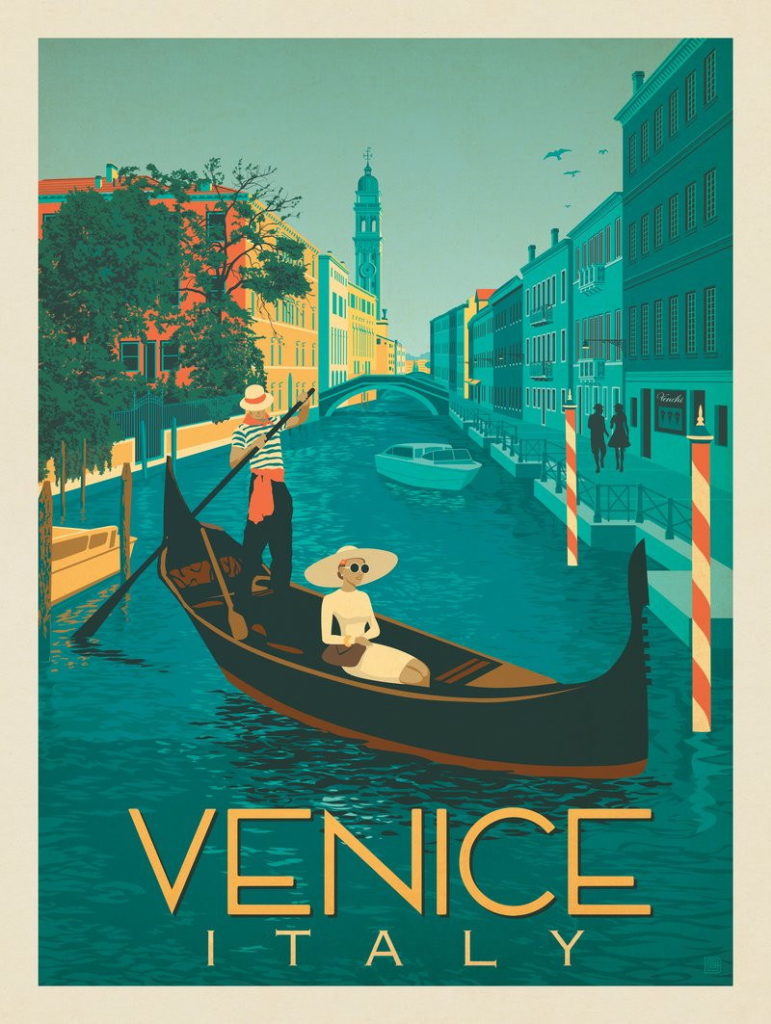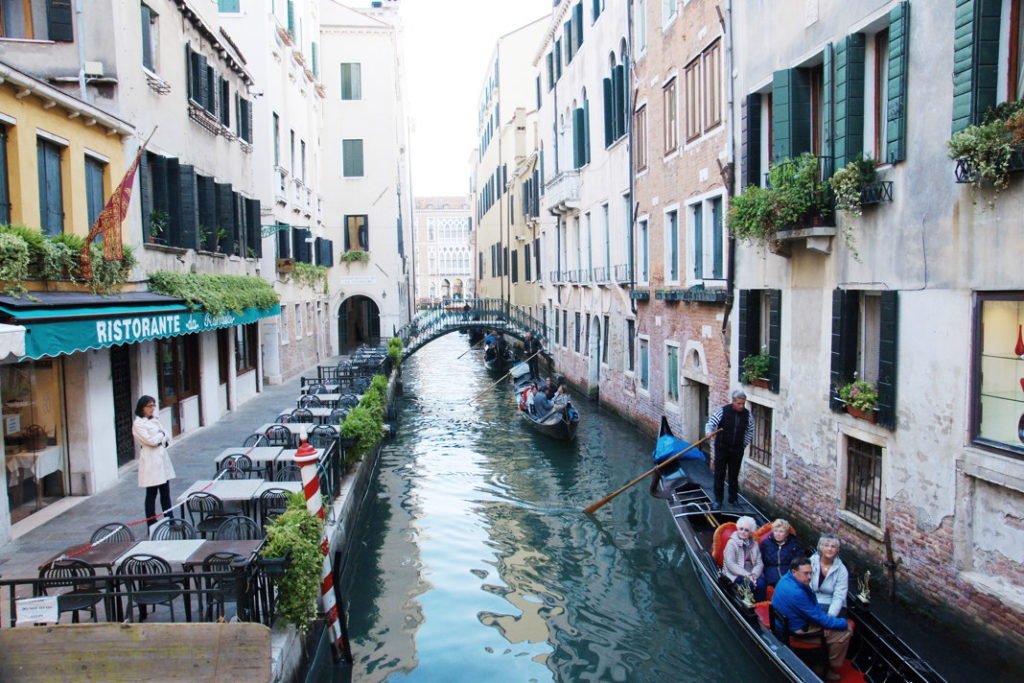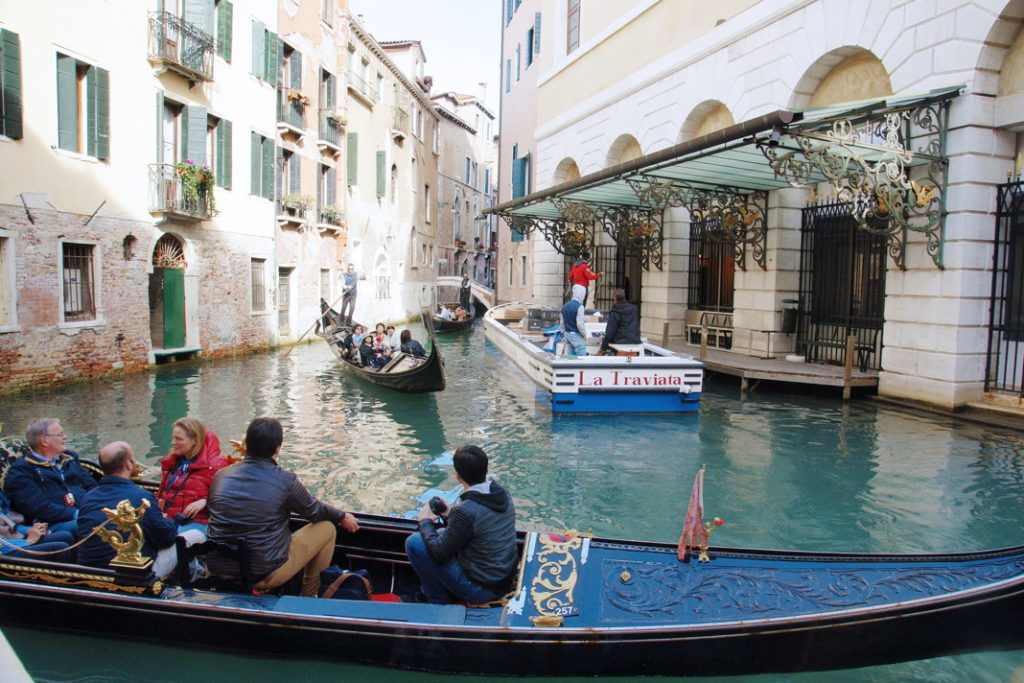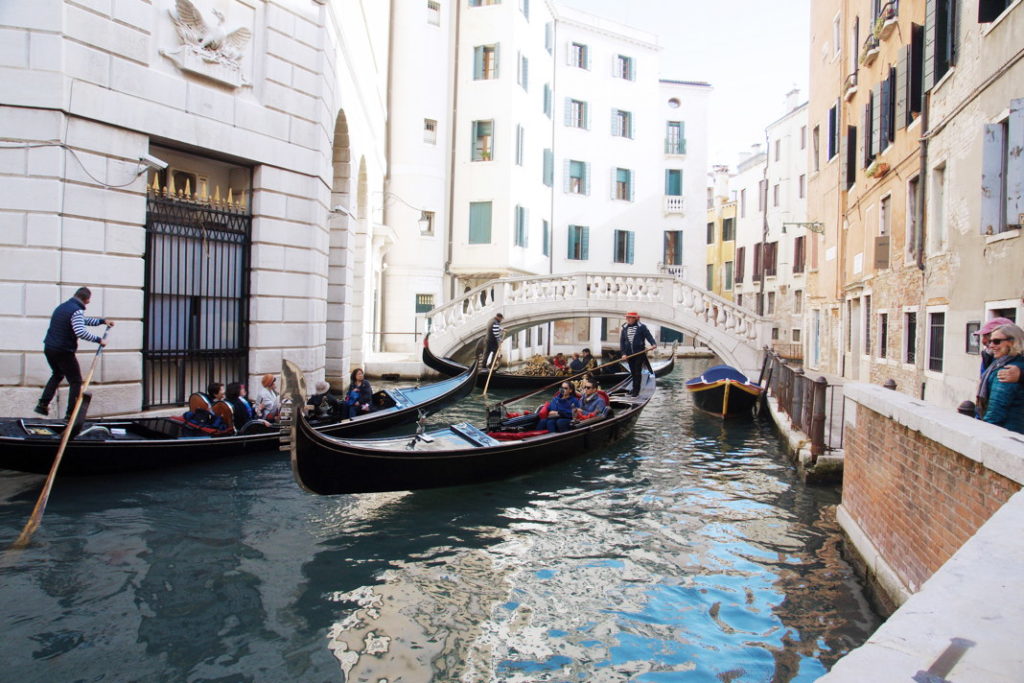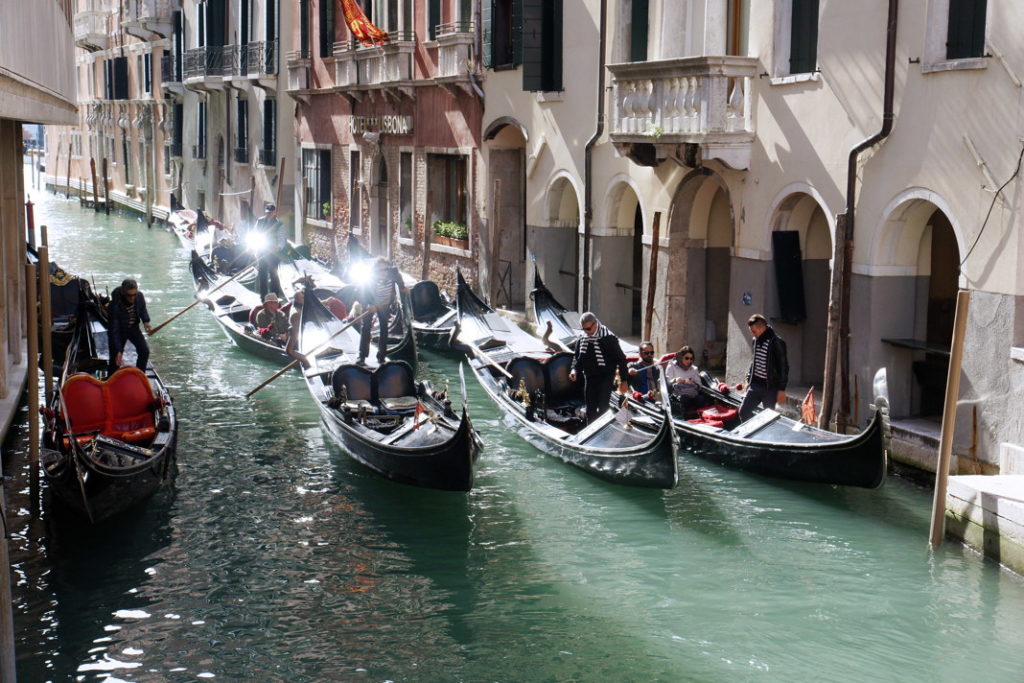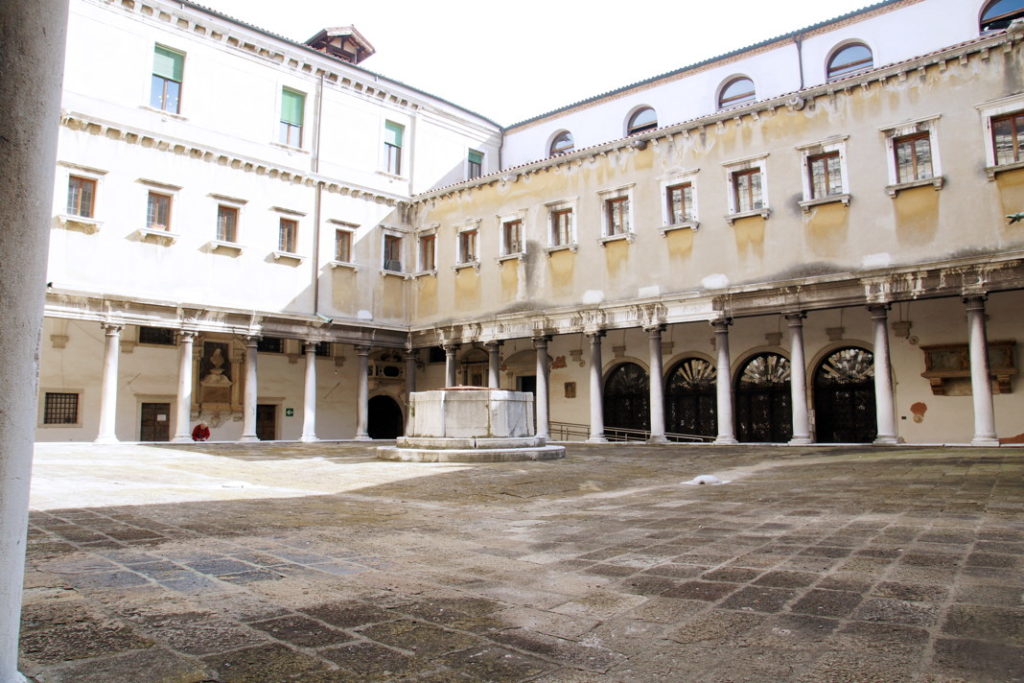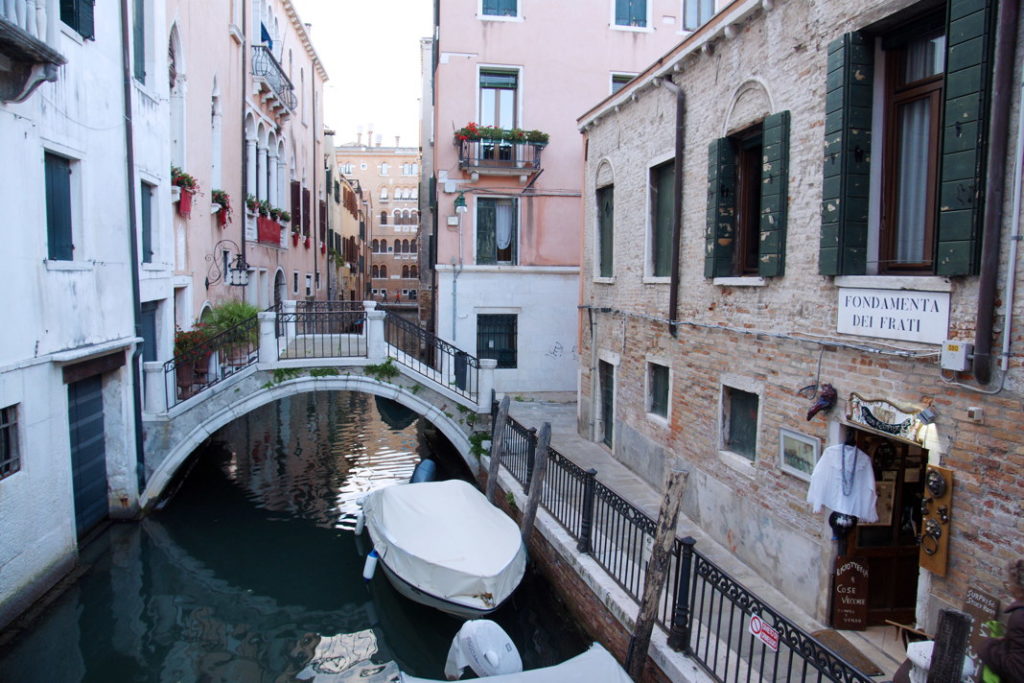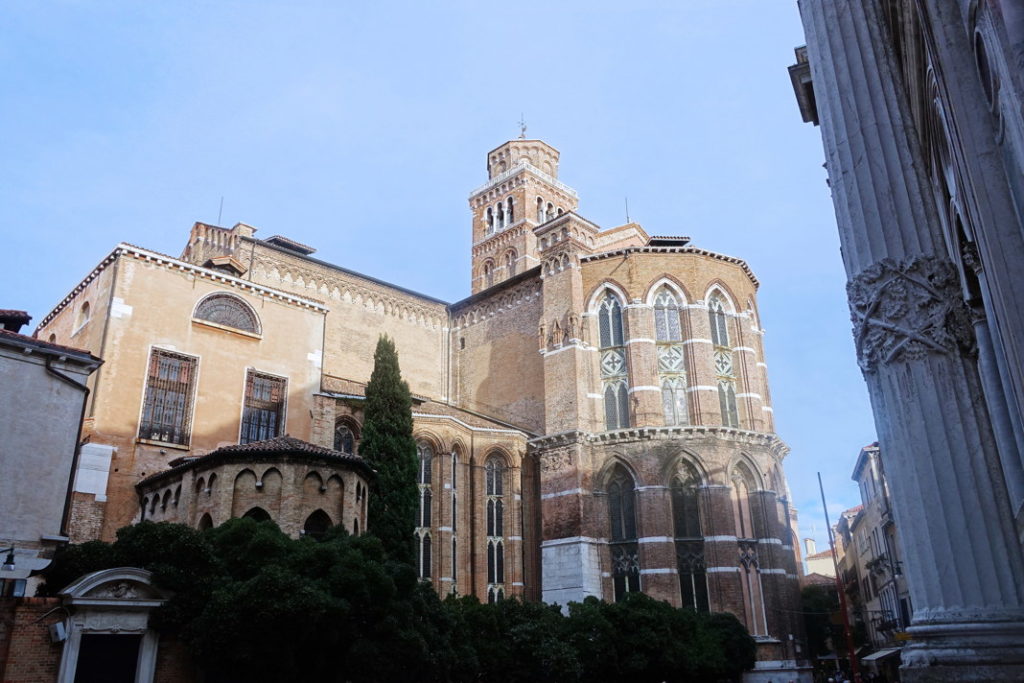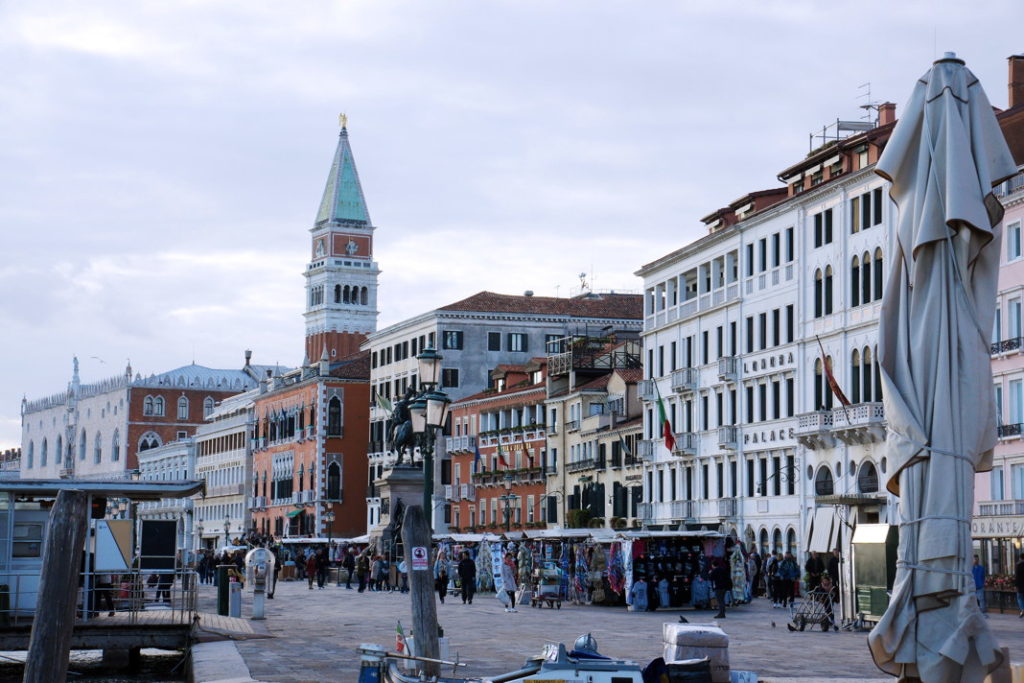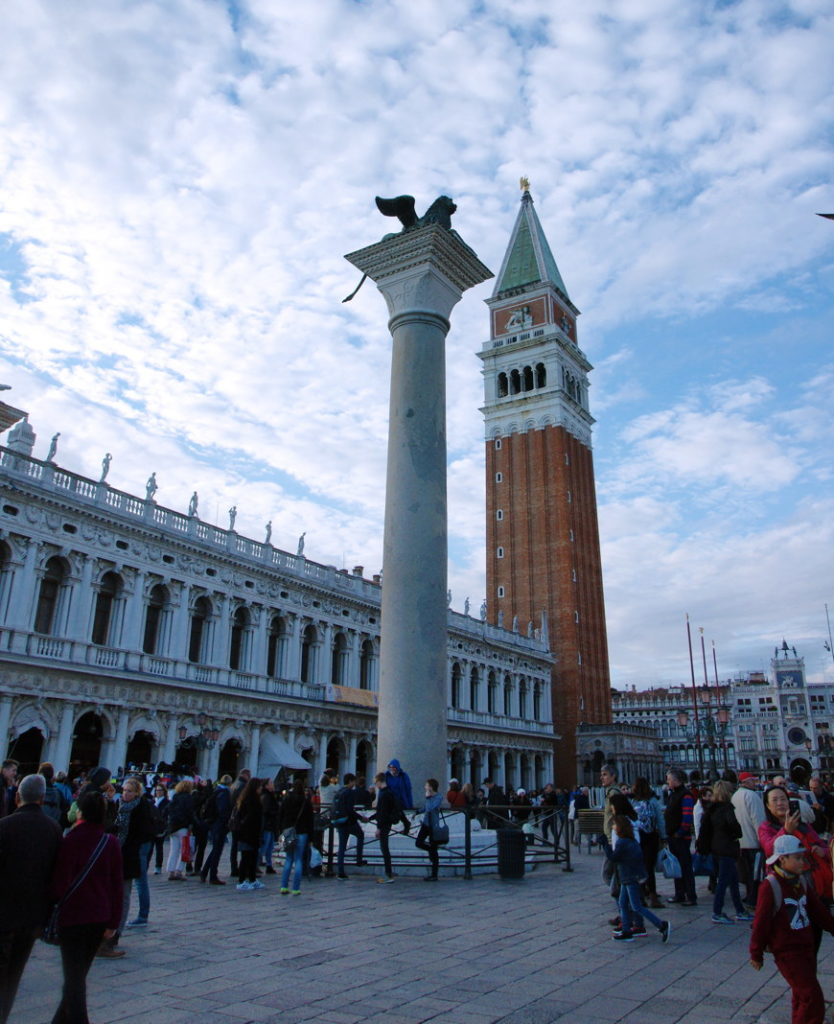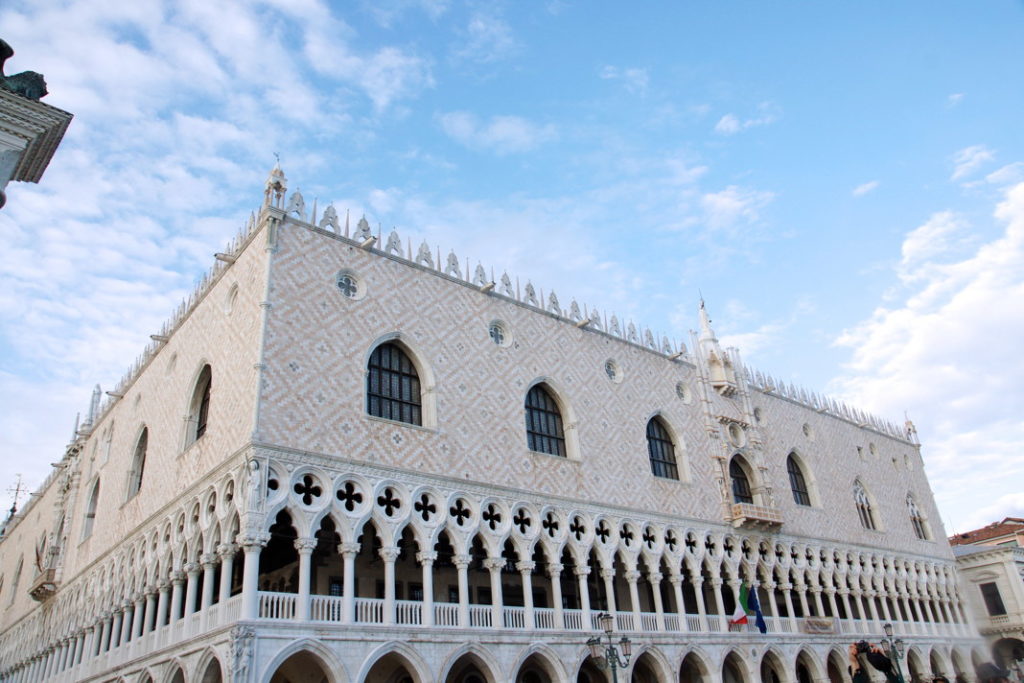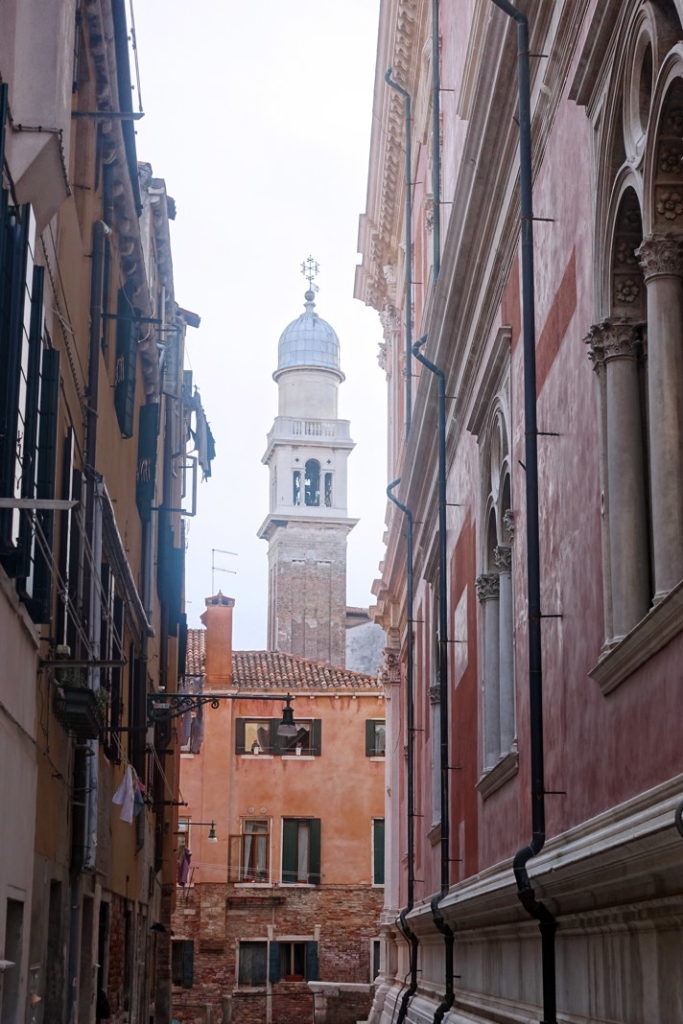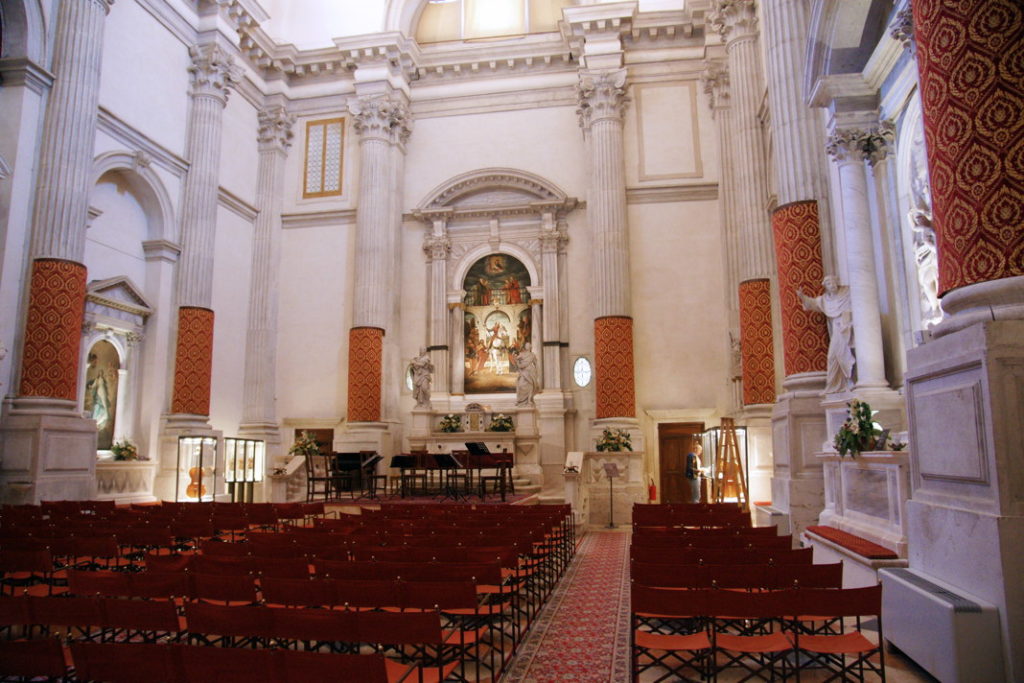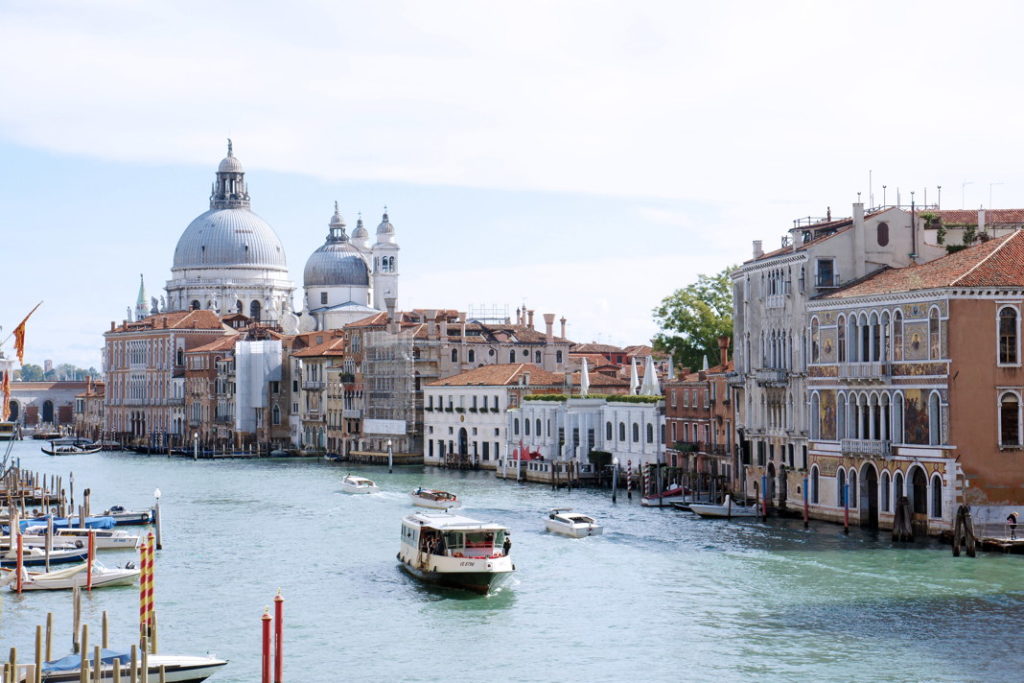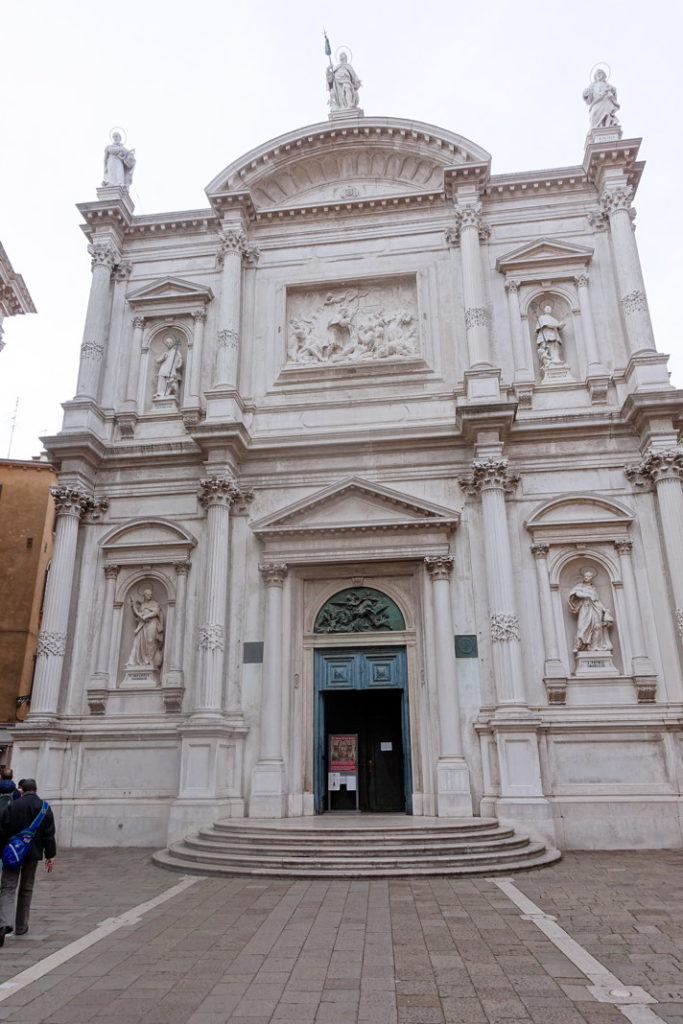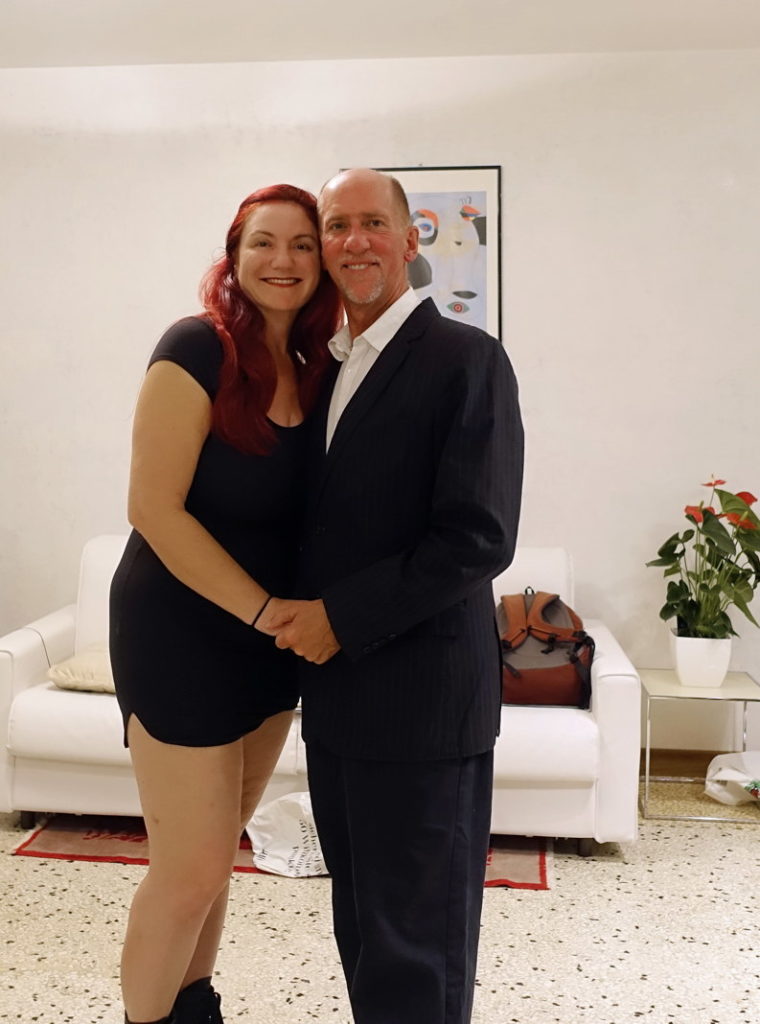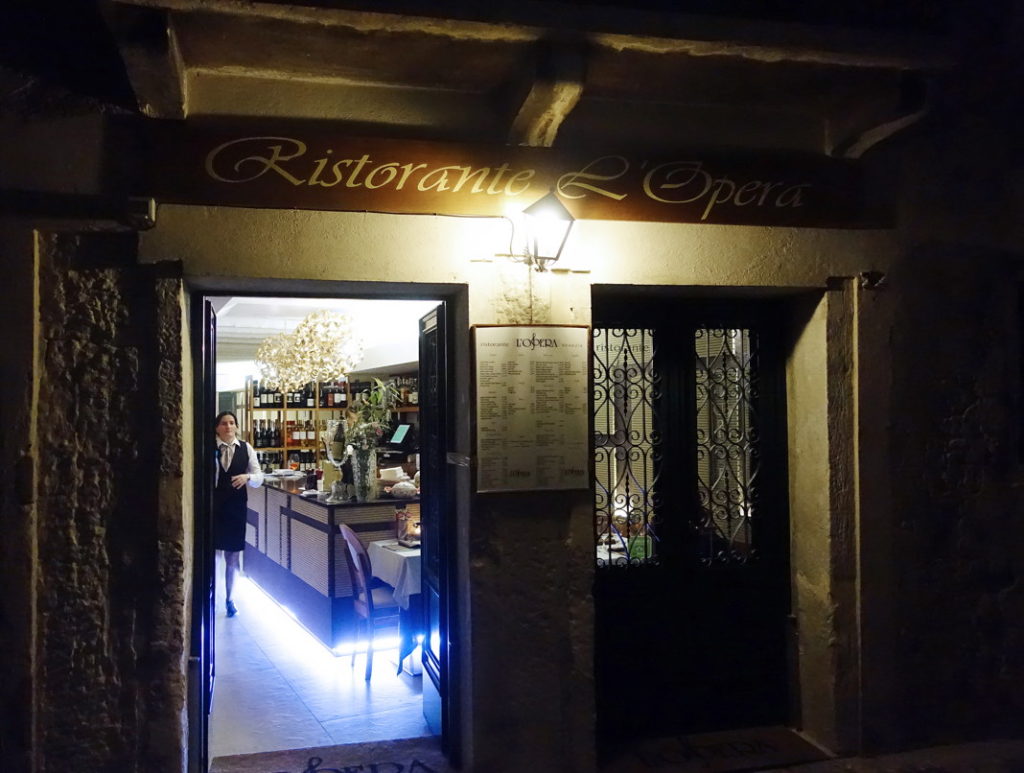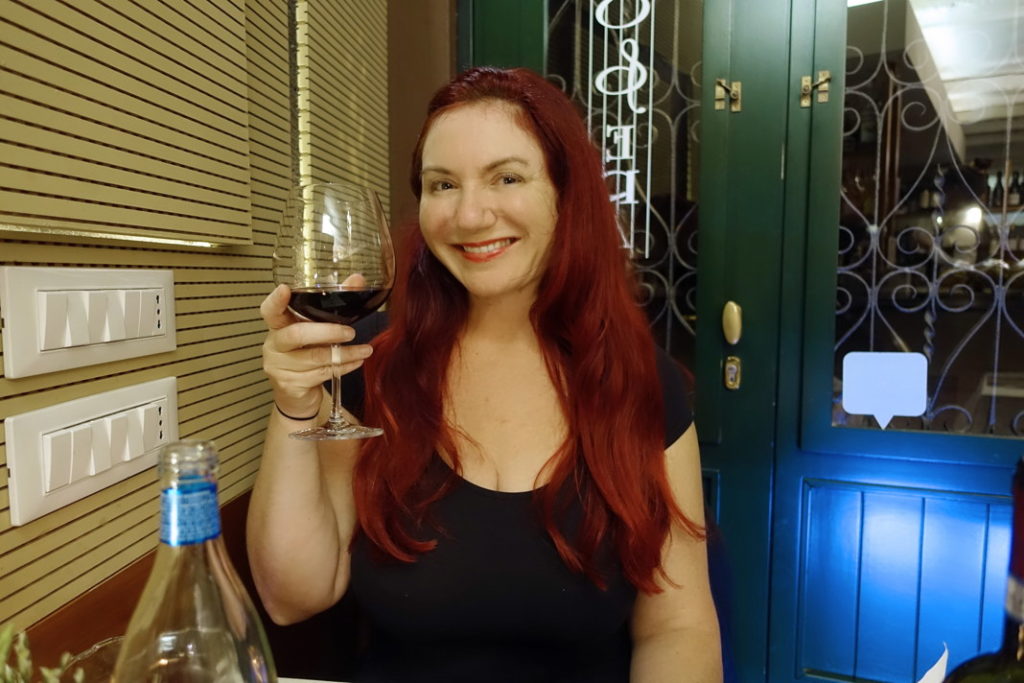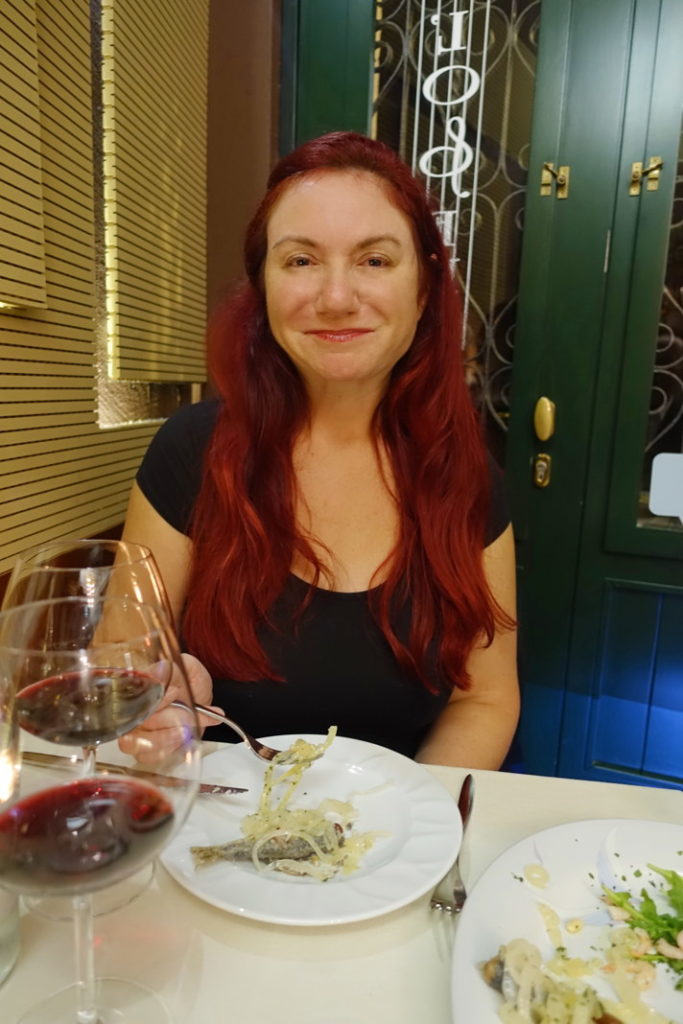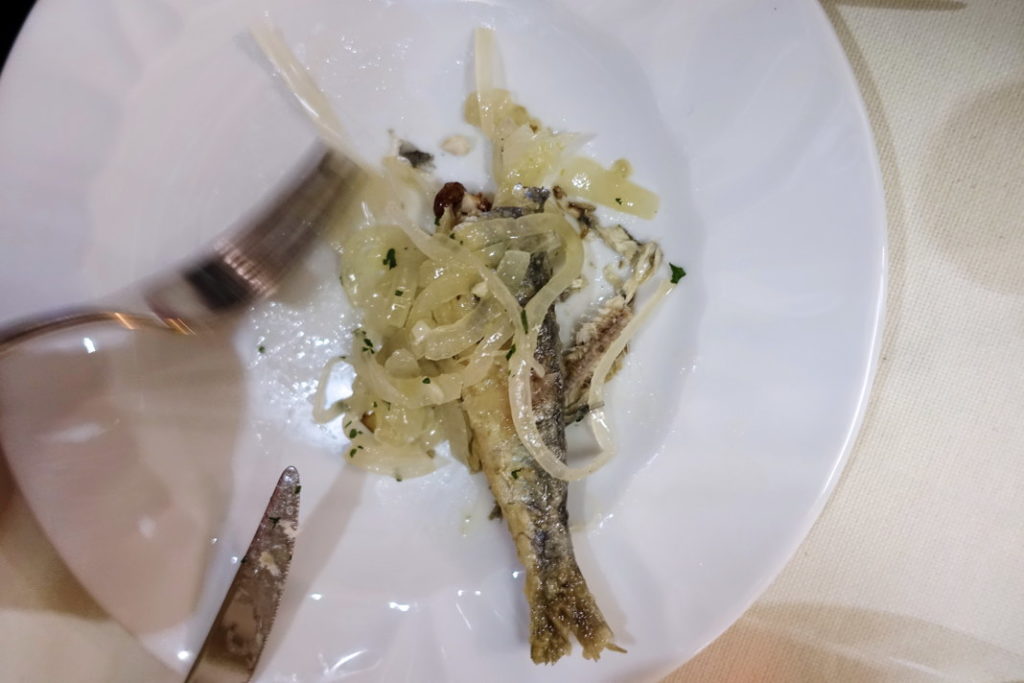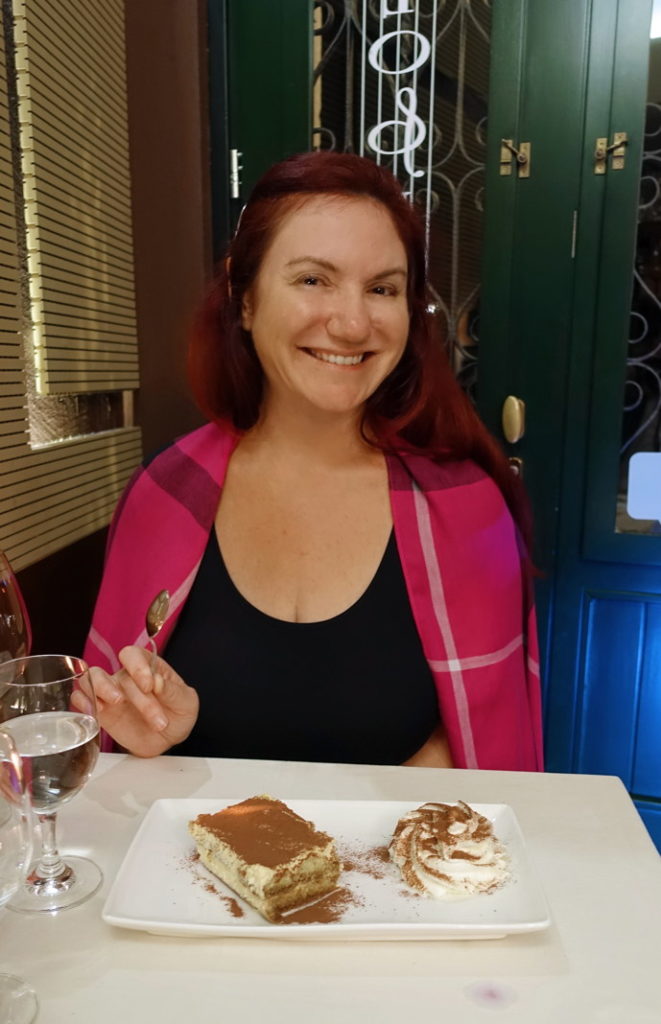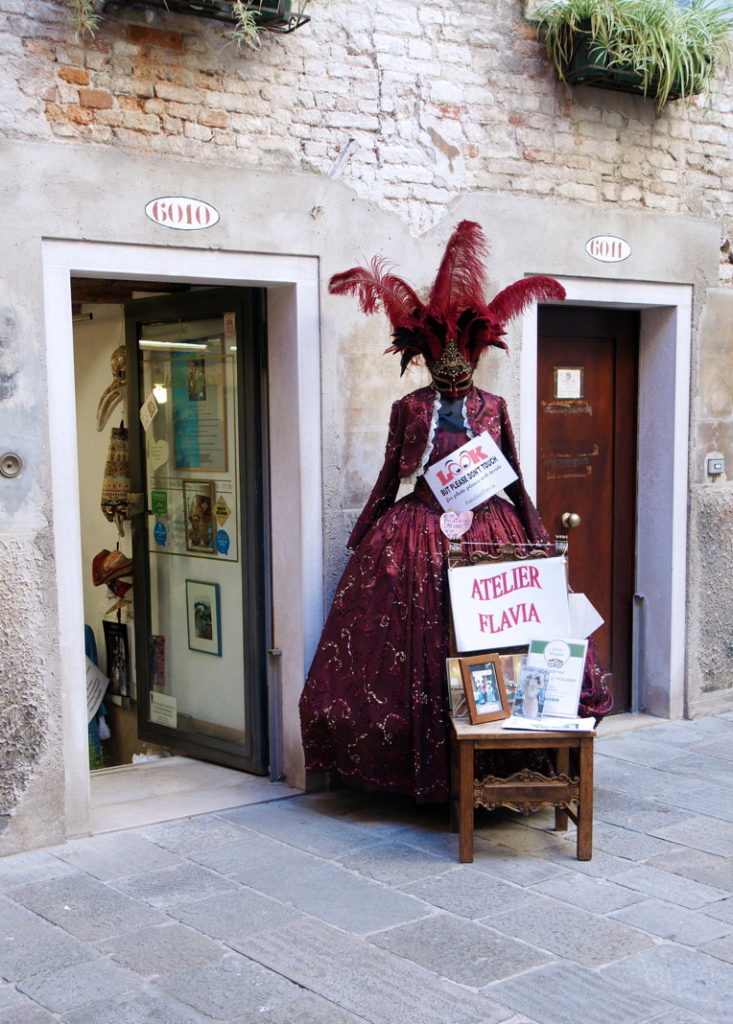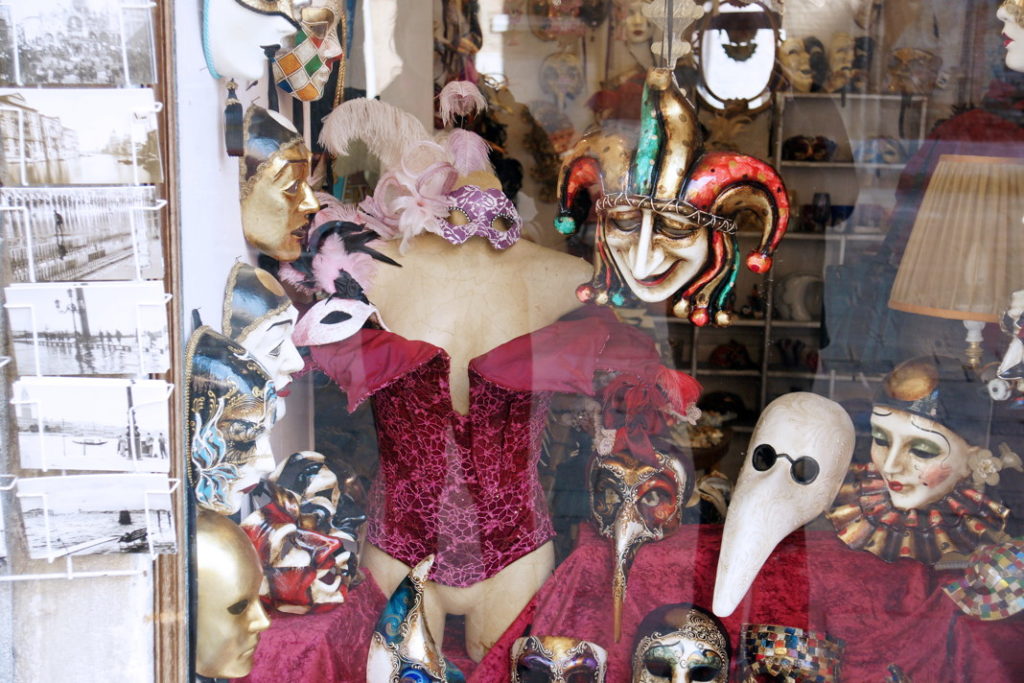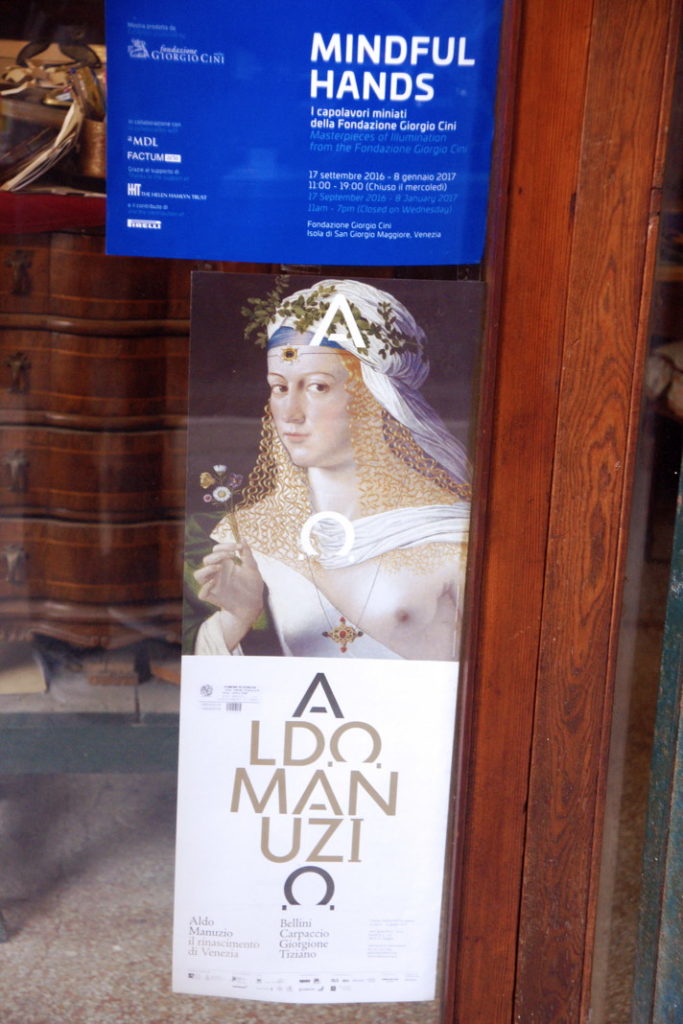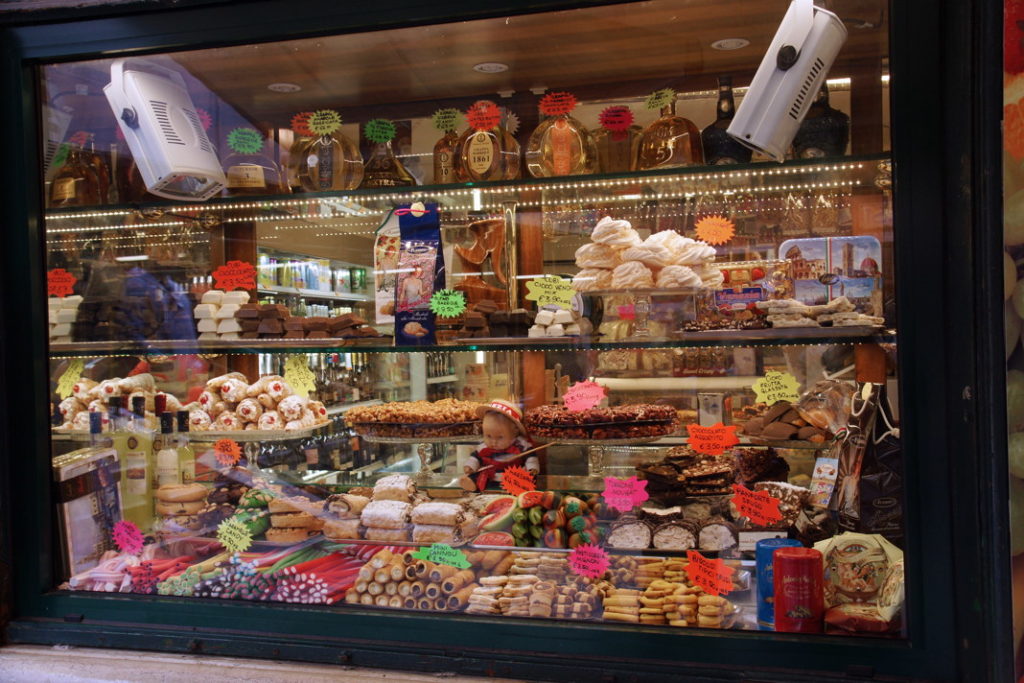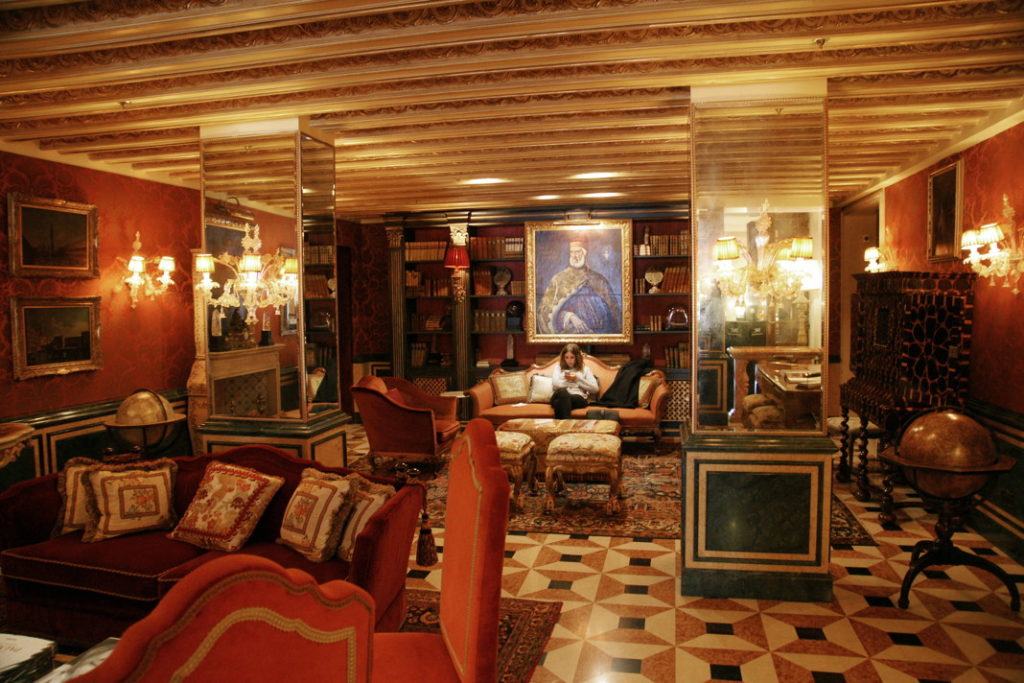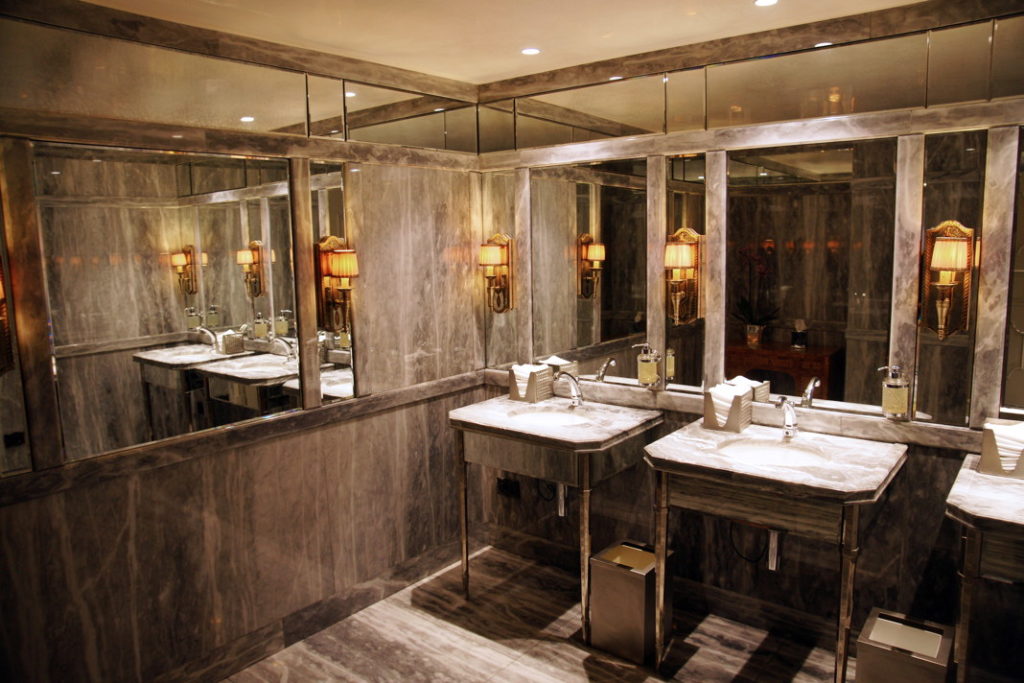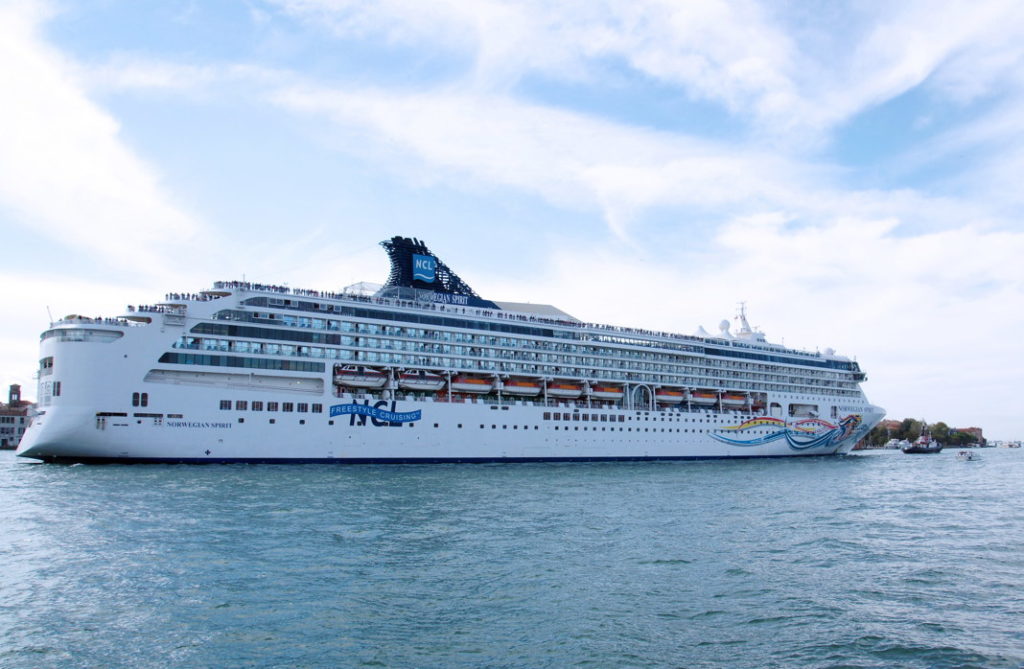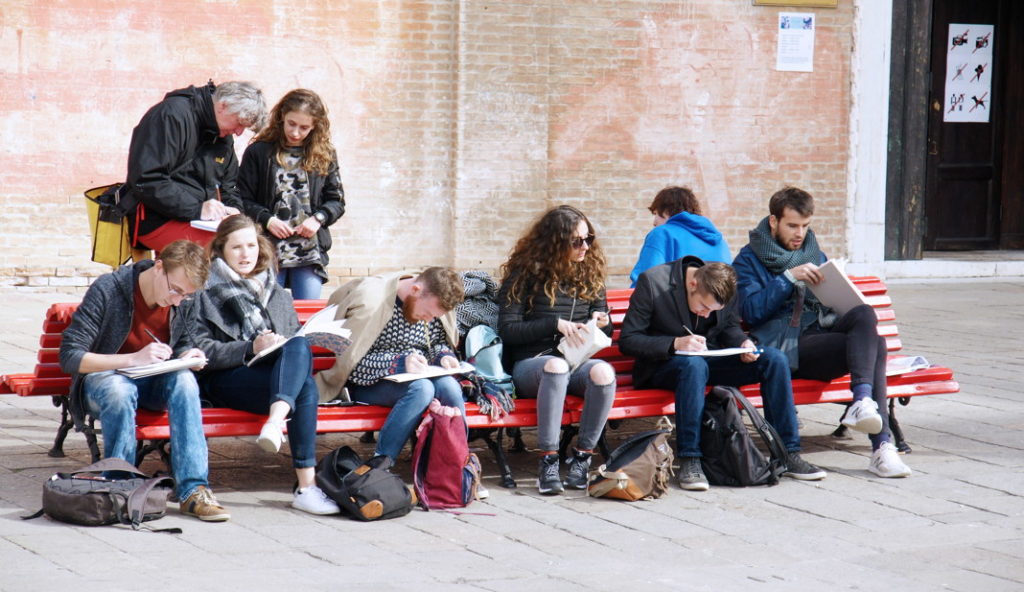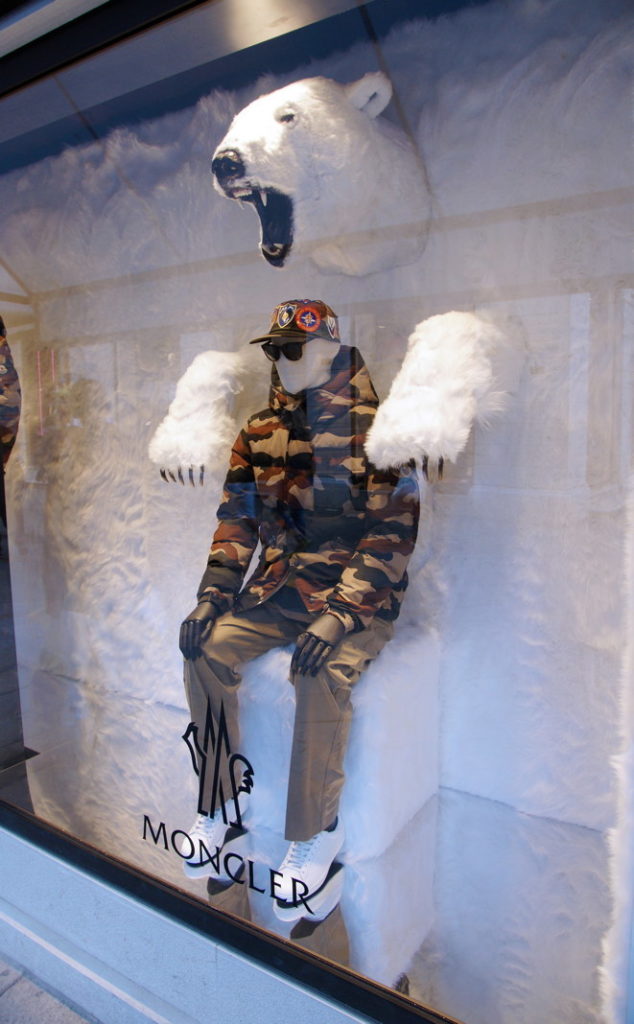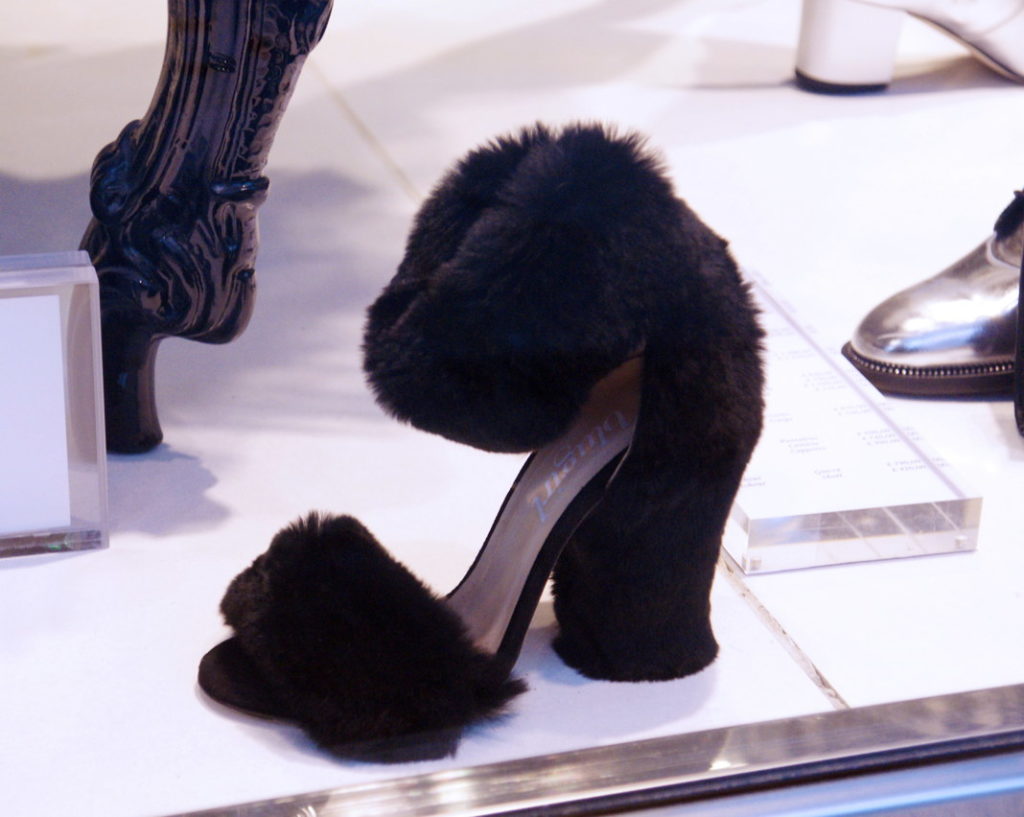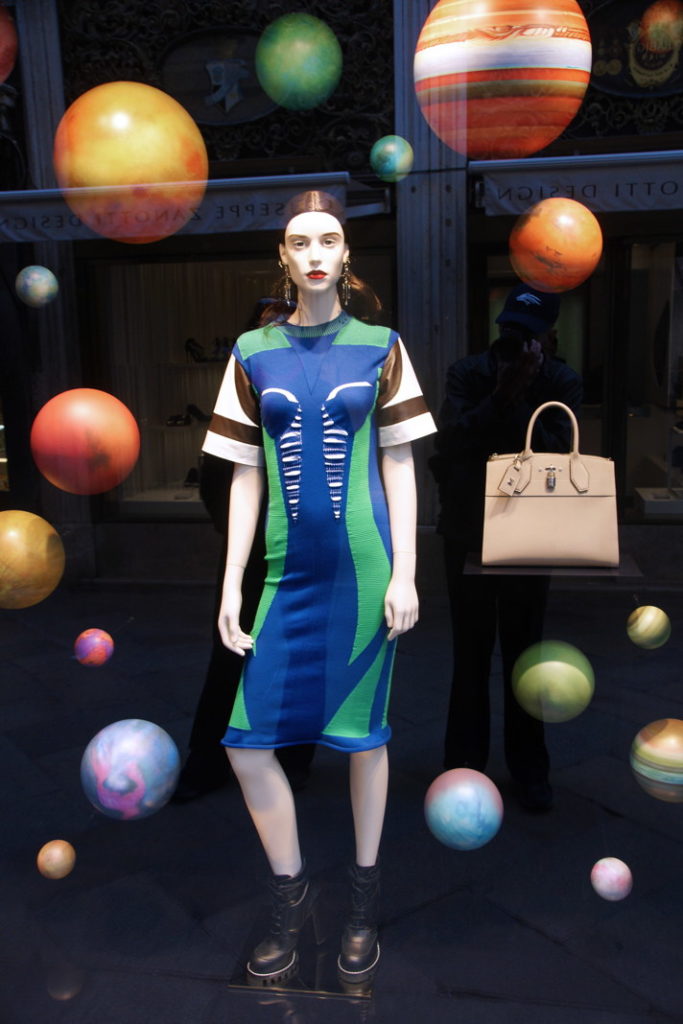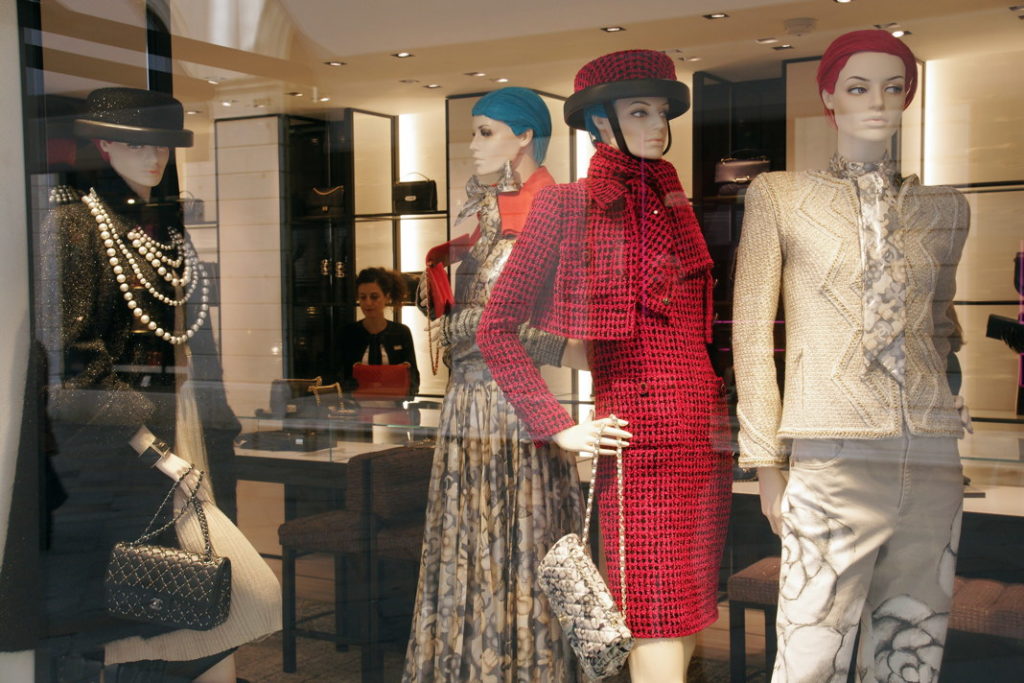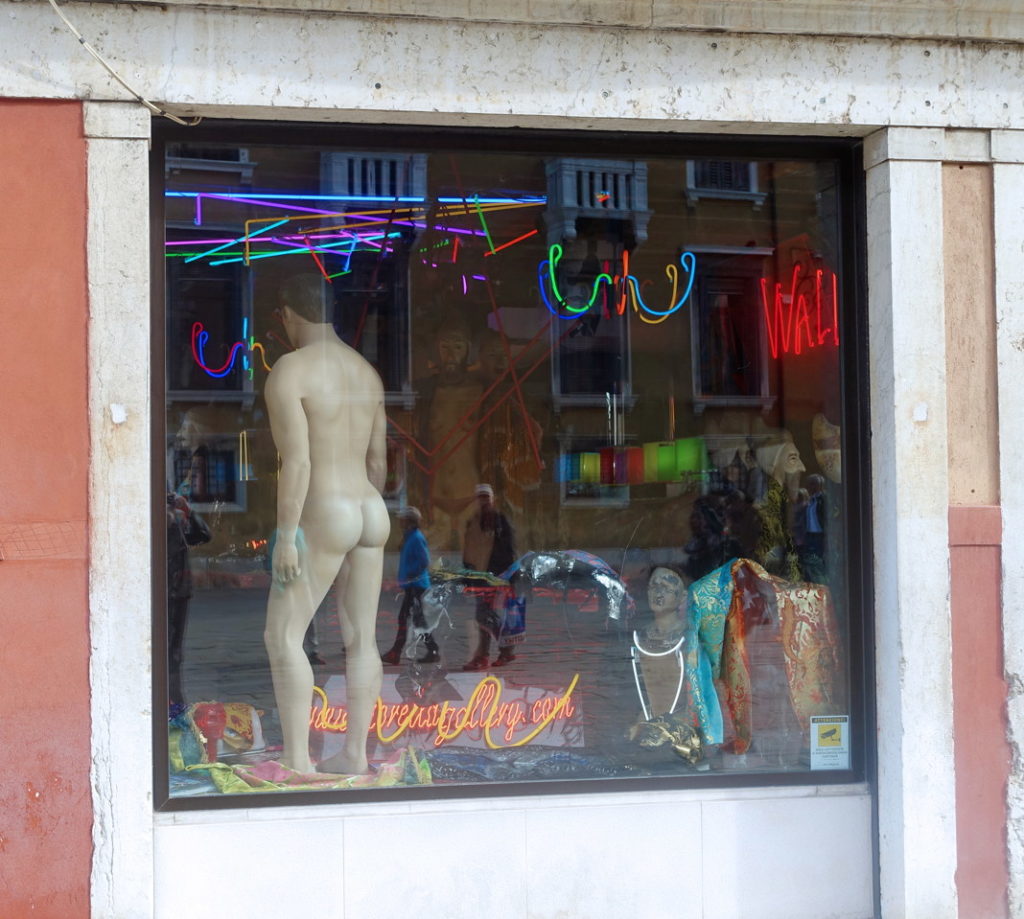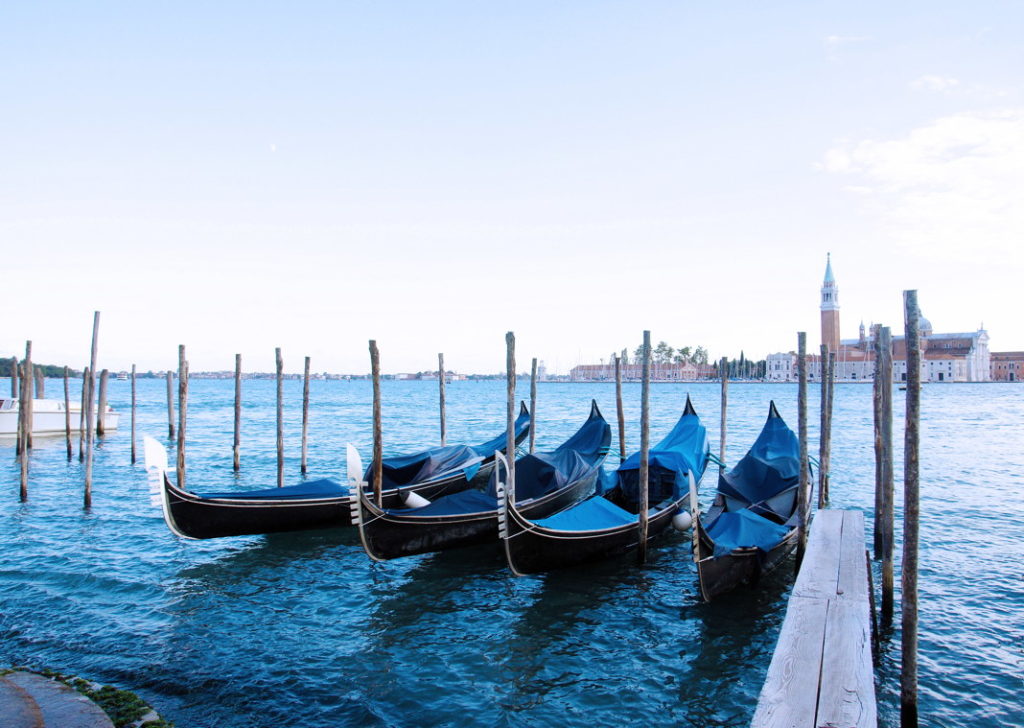Venice has long fascinated travelers, both active and armchair. The canals, alleyways, and unusual architecture are unique and enchanting, and the idea of a romantic ride on a gondola is iconic to the city.
We have booked a room for three nights at the Palazzo Paruta hotel in Venice, Italy and we’re about to arrive!
Venice is easy to find; there is an abundance of signs along the highway. We follow SR 11 from the mainland across a long bridge and park in Garage San Maraco, a public parking garage in Piazzale Roma. We’re not sure how to find a water taxi, so we follow other people pulling suitcases.
As it turns out, it’s pretty easy. The maps are simple to read in any language, so as long as you know the nearest stop to your destination, you can’t go wrong.
The architecture draws our attention. Not only are the buildings built (seemingly) on water, but many strive to look “Renaissance”: stone columns, balconies, arches, arcades, towers, spires, and filigree. Other buildings, except that they are on water, look little different than other old building found in Europe.
We pass dozens of structures, captivated.
Palazzo Paruta Hotel
We de-boat at our stop, Sant’Angelo, and start looking for the hotel, only to realize there are few “streets” here, but rather passageway connected by arched bridges. We wander, hoping we are going in the correct direction, and eventually come upon a large square, Campo Sant’Angelo. And there is the Palazzo Paruta hotel, our destination.
The lobby is as much outside as inside, and is a quiet retreat from the noise of Campo Sant’Angelo.
There is a lovely dining area just off the lobby, empty now because it’s still early.
The formal sitting room seems like a scene from the time Venice was an international financial center.
We check in and are escorted to our room, which is in their annex building about 50 meters away. We have a 1-bedroom deluxe apartment with two baths, a full kitchen, and a terrace. And we are happy.
The living room is surprisingly large and the furniture is soft and plush. It feels classy.
There is an art structure here. At least, we think it is art. We can’t even guess what it might represent. Notice the key fob in the wall: the electricity will not work unless the key fob is there. This prevents us from leaving lights and appliances on when we are not in the apartment.
Well. Doing the dishes might prove challenging.
The terrace is lovely. Better yet, classical music drifts from one of the surrounding apartments. This is what Venice is supposed to be like, right? 😛
There is an outer door to a vestibule, and a door to our apartment. I’ve seen bank vaults with less secure locks.
Okay, let’s explore Venice! 😎
But first, lunch. And luckily, there is a restaurant in Campo Sant’Angelo, the Hostaria Galileo. We find an empty table and seat ourselves.
The waiter brings a large bottle of water, and we place our order. And if you think we aren’t going to eat pizza in Venice, Italy, you’ve got another think coming. 🙂
After lunch, we set out to explore the most famous icon of Venice, the gondolas.
Gondolas
The Venetians take their gondolas seriously, and scrupulously maintain them.
The interior of the gondolas is well appointed, as if for royalty.
Now, this is how we imagined traveling in Venice via gondola: classy, cultured, elegant.
We were mistaken. Gondola rides for tourists are a staple activity in Venice, and they are in abundance.
Groups of tourists share a gondola, and the lines of gondolas are endless.
Some of the gondola drivers are a bit more cavalier in their attitude towards upright boating.
Other tourists watch, as we do, amused by the antics of the gondoliers.
Okay, enough photographs. Gondolas are nice, but just not quite the romantic adventure we expected. We decide that we will be satisfied with observing, and leave the actual experience to others.
Architecture
Before we left on this adventure, a friend told us, “When you’re in Venice, get lost.” So we are taking his advice: we wander with no particular goal or direction, just to see what there is to see. And it’s just as well; there is no way we could describe how we get from here to there. We walk down narrow passage ways, cross unmarked bridges, follow along with throngs of other tourists, and find few signs marking our location. A great way to travel, eh? 😎
We walk through a narrow passage way near our hotel and discover a beautiful colonnade in an empty courtyard, with no indication of what it’s for or why it’s empty. We stop for a moment to take in the beauty, wondering if the average Venetian appreciates how special such places are.
Venice is a series of narrow walkways and arched bridges, punctuated with large piazzas (squares or courtyards); There is scarcely any vegetation aside from what’s growing in the water. Frequently, the piazzas have a church associated with them, and those churches are splendid.
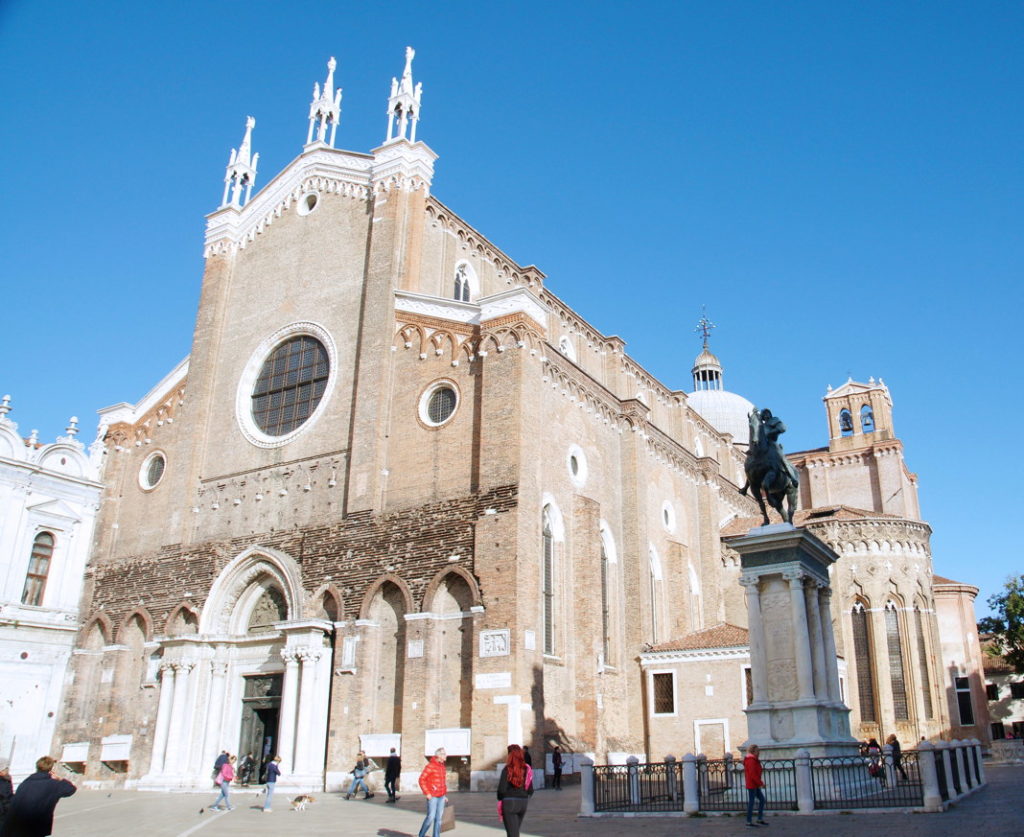
The Basilica di San Giovanni e Paolo, known in Venetian as San Zanipolo, is one of the largest churches in Venice.
The Basilica di San Giovanni e Paolo was built in the 1400s, and is designed in the Italian Gothic style. It is the principal Dominican church of Venice, built specifically to hold large congregations. The equestrian statue is of Bartolomeo Colleoni, a 15th century condottiero (mercenary) who commissioned the statue himself.
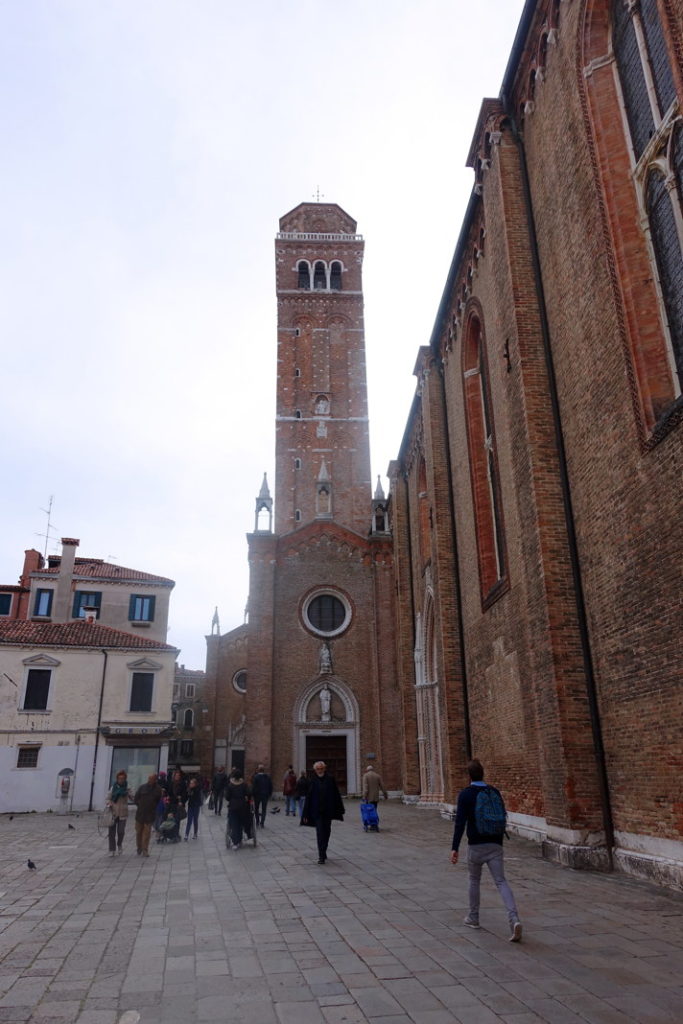
The Basilica di Santa Maria Gloriosa dei Frari, where Titian, the most important member of the 16th-century Venetian school of painting, is interred.
The Basilica di Santa Maria Gloriosa dei Frari, with its distinctive bell tower; although all these churches have in distinctive bell towers, this one puts me in mind of McDonalds. I know, sacrilege…
This church is owned by the Franciscans. The campanile is the second tallest in Venice (after that of San Marco).
The Campanile di San Marco stands 98.6 meters tall, and is the bell tower of Basilica Cattedrale Patriarcale di San Marco . It has five bells, each with a special purpose. The Renghiera (or the Maleficio) announced executions; the Mezza Terza proclaimed a session of the Senate; the Nona sounded midday; the Trottiera called the members of the Maggior Consiglio to council meetings and the Marangona, the biggest, rang to mark the beginning and ending of working day. And, if you are musically inclined, you will be pleased to note they are tuned in the scale of A.
The Lion of Venice, atop the column, is said to symbolize the city as well as one of its patron saints, St. Mark. It is a composite of several different pieces of bronze created at different times, the earliest being between the end of the 4th and the beginning of the 3rd centuries BC. The Lion of Venice, in a stylized form, appears on the flag of Venice.
Palazzo Ducale was the residence of the Doge of Venice, the supreme authority of the former Republic of Venice, opening as a museum in 1923. Today, it is one of the 11 museums run by the Fondazione Musei Civici di Venezia.
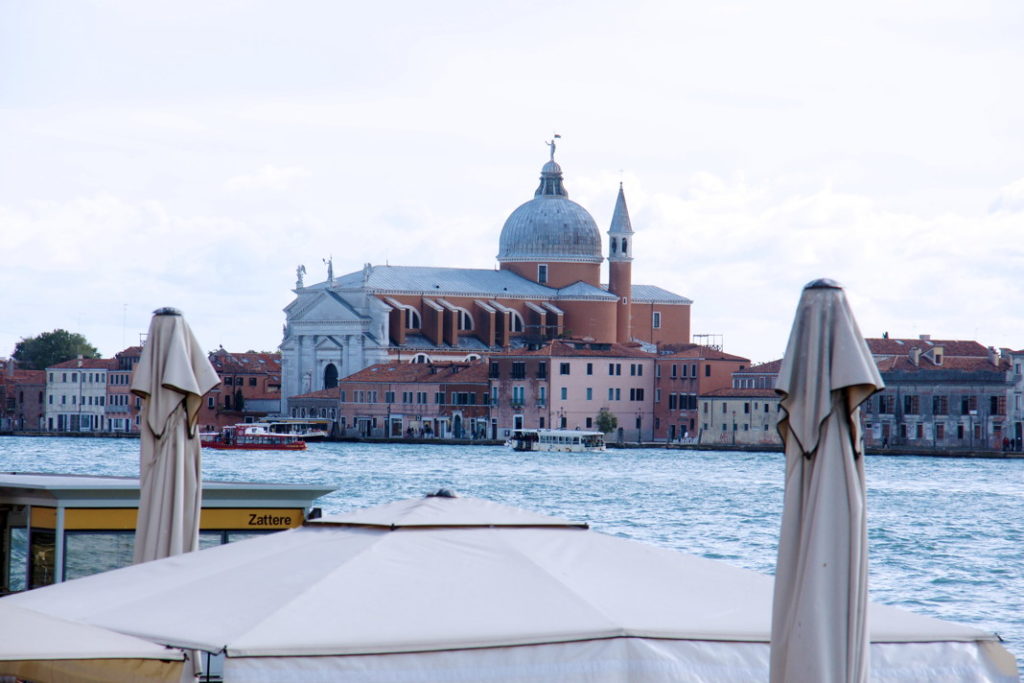
The Chiesa del Santissimo Redentore, built in the 16th-century. Note the large minaret crowning the church, suggesting Turkish influence.
The Chiesa del Santissimo Redentore, viewed across the Canale della Giudecca. Note that the church is crowned by a large minaret, suggesting Turkish influence. The church was built as a votive church in thanksgiving for deliverance from a major outbreak of the plague that decimated Venice between 1575 and 1576, in which some 46,000 people (25–30% of the population) died. Note that the plague killed up to 50% of the population of crowded cities, so cutting the number in half must have seemed divine intervention at the time.
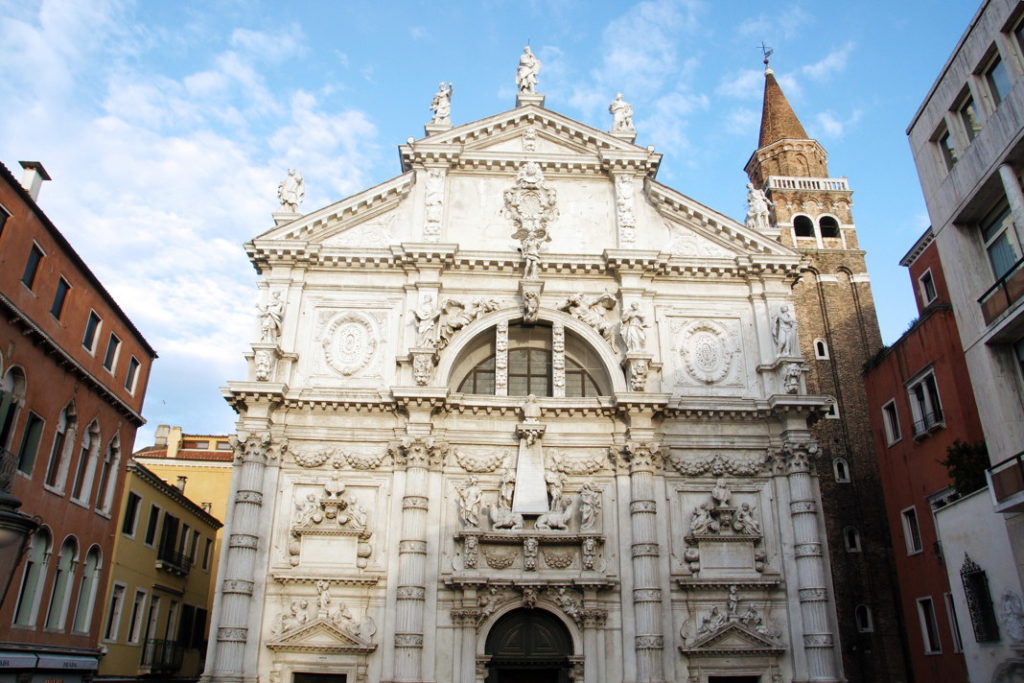
The Chiesa di San Moisè was built initially in the 8th century; it is dedicated to Moses of Old Testament fame.
The Chiesa di San Moisè, dedicated to the Egyptian Moses, of biblical fame, is also dedicated to Moisè Venier , who funded the reconstruction in the 9h century — hence the church’s name. The bust over the door is that of Vincenzo Fini, who funded the Baroque facade in the 1600s. Because statues in public spaces were forbidden in Venice, Fini circumvented this ordinance by placing his likeness on the church’s facade.
The fabulous bell tower of the Chiesa di San Pantaleone Martire. According to this Venipedia article, “The of (sic) Bell Tower of San Pantalon was built at an unknown date by an unknown architect…The shaft of the bell tower has an unknown number of arches on the front, an unknown number of arches on the left, an unknown number of arches on the right, an unknown number of arches on the back. There are an unknown number of steps. The belfry is made of an unknown material with its bells supported in an unknown fashion.” 🙄 Despite being overwhelmed by these facts, we are intrigued by finding yet another example of a religious structure crowned with a minaret.
San Vidal is one of the few churches we venture inside. It is empty save for one other person and, as you might expect, it’s quite beautiful.
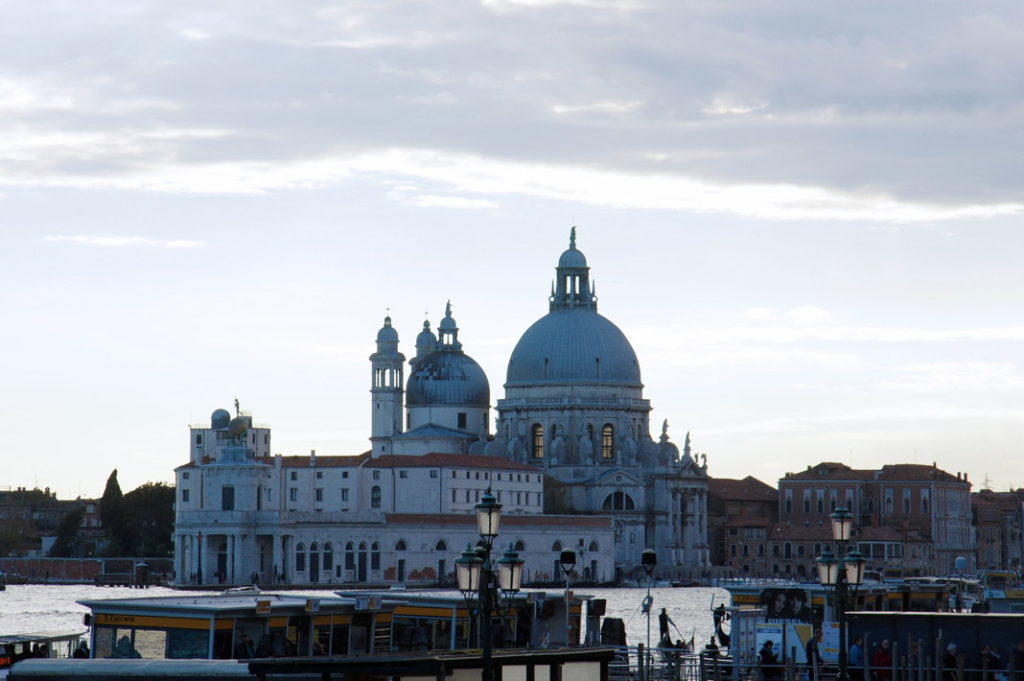
The Basilica of Santa Maria della Salute, built in the 1600s as a votive offering for the city’s deliverance from the plague.
The Basilica of Santa Maria della Salute is another church built as an offering for Venice’s deliverance from the plague. This one is dedicated to Jesus’ mother and is pivotal in the annual festival. Again, notice the minaret, which seem to be thematic to the larger churches.
This photograph shows a typical, perhaps classic, experience of our visit to Venice: waterways, colorful pilings, builds on the water, boats, and a beautiful building in the background.
The Scuola Grande di San Rocco is named after San Rocco, popularly regarded as a protector against plague. It is the seat of the lay confraternity La Scuola Grande di san Rocco, which was founded in 1478 and is still active today, carrying out its traditional charitable duties as well as looking after its extraordinary artistic patrimony.
Dinner
Okay, we are hungry, and it’s time to experience a taste of Venetian fine dining.
We get dressed, pause to take a quick photograph of ourselves (see above), then walk to a restaurant just around the corner from our apartment.
Ristorante L’Opera is an elegant restaurant with few other diners. We are greeted as we approach, and we select a table near the front.
First things first: a glass of delicious Italian red wine. Mmmmmmmm.
We are in Venice, so we order, not really sure what we are selecting but trusting the epicurean sensibilities of the cook.
Hmmmm, we seem to have ordered cabbage on a small, whole fish. Oh, well. When in Rome…er, Venice….
Ah, but here is the true reason to eat in Italy, right? You can’t go wrong with dessert in any country. 😛
Sights and Sounds
We walk back to the apartment, have a good night’s sleep, then strike out in the morning. Today we will eschew architecture and buildings, and instead focus on all the other sights and sounds of Venice.
Every spring, Venice celebrates Carnival, purportedly to commemorate victory of the Venice Republic against the Patriarch of Aquileia, Ulrico di Treven in the year 1162. One of the most important events is the contest for la maschera più bella (“the most beautiful mask”) which is judged by a panel of international costume and fashion designers
One of the most recognized Carnival mask is the Medico Della Peste, the “Plague Doctor“. The beak held spices to protect the doctor from miasma while tending to patients.
A poster advertising Mindful Hands. Masterpieces of Illumination from the Fondazione Giorgio Cini. Naturally, my mind goes somewhere else… 😀
We do not find too many sweet shops in Venice, but with a selection like this, they need only a few.
We come upon Hotel Gritti Palace and decide to take a look inside. Wow. This really is a beautiful hotel.
I need to use the men’s room, but it was too nice. I decide to wait until later. (Just kidding. I did not wait.) Also, yes, it’s kind of creepy to take a photograph in a public toilet, but there was no one else in there. I’m not completely insensitive to cultural norms. 🙂
Occasionally there are pulses of tourists that seem to pull you along. And this is why: thousands of tourists disembark and quickly rush about, taking in as much as they can before they must return. We later discover that we are not the only ones finding this to be less than optimal; Venice has decided to ban large cruise ships in the near future. We approve.
Venice is more than canals and churches. This city has produced numerous artists and perhaps these folks will one day be added to that list.
Fashion
What do Venetians wear when they go out in style? We don’t know because we can’t tell the locals from the tourists. But we can make a note of what sells in Venice’s clothing shops.
Like most people, we might admire fashion, but don’t expect us to understand it. Is this man sitting under polar bear parts, or is the polar bear emerging from another dimension? Does it get so cold in Venice that a polar bear is a selling point?
If it’s so cold that a lady must wear fur-clad high heels, my advice is to say indoors.
There is so much about this fashion display that I don’t understand.
Elegant outfits, but what’s with the hat? Is it made of metal, and that’s why it needs to be strapped on? Does it protect from shrapnel? So many unanswered questions.
What are they selling here? Even if this mannequin were clothed, why is it facing away from us? Also: we saw no one dressed like this; maybe we are frequenting the wrong establishments. 😆
But, all things must end, and our two-day excursion is drawing to a close. Venice was not quite what we expected, and that is why we travel.
As John Ruskin once said, “Venice…A splendour of miscellaneous spirits.” We shall always cherish our memories of this grand city.

